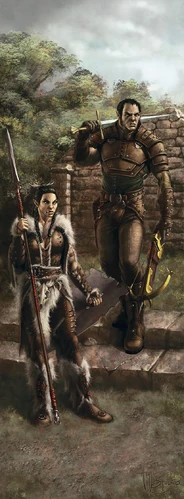Reviewing D&D Monsters - 5E Monster Manual, Carrion Crawlers to Demiliches (ft. Player Races)
Written on: 9月 23, 2019
Reviewing D&D Monsters - 5E Monster Manual, Carrion Crawlers to Demiliches (ft. Player Races) - Hi friends, I hope you are all in good healthkanakoroku, In the article you are reading this time with the title Reviewing D&D Monsters - 5E Monster Manual, Carrion Crawlers to Demiliches (ft. Player Races), We have prepared this article well for you to read and take information in it. hopefully the contents of the post
Artikel Dungeons & Dragons,
Artikel Game,
Artikel Reviewing Monsters, what we write you can understand. ok, happy reading.
Title : Reviewing D&D Monsters - 5E Monster Manual, Carrion Crawlers to Demiliches (ft. Player Races)
link : Reviewing D&D Monsters - 5E Monster Manual, Carrion Crawlers to Demiliches (ft. Player Races)
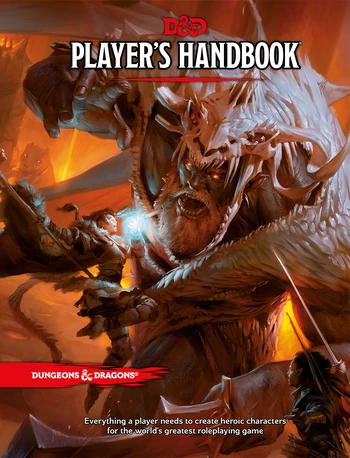 In general, though, I really am happy to just sit down and talk about some Dungeons & Dragons. D&D has been a game that... I have a weird relationship with. I've honestly loved the franchise more for the opportunity for world-building, and the large, large selection of weird creatures and races that live in this fantasy land, ranging from just your typical Greek and European myth inspired monsters to some bizarre original creations to some really weird things. I really do enjoy that D&D's actual rulebooks and sourcebooks tend to be relatively light on details, allowing any GM or DM (I use the two terms interchangeably) to craft their own world alongside the players. My gaming group's GM has always told me that I tend to view the D&D gaming system as more of a vehicle and an accessory to the role-playing and worldbuilding, and... and he's not wrong. The combat's cool, don't get me wrong, and I'm not that huge of a drama queen that I don't know how to at least build a competent, non-gimped character, but I've always viewed D&D to be fun-and-stories first, world-building second, and the actual mechanics and dice-rolling a distant third.
In general, though, I really am happy to just sit down and talk about some Dungeons & Dragons. D&D has been a game that... I have a weird relationship with. I've honestly loved the franchise more for the opportunity for world-building, and the large, large selection of weird creatures and races that live in this fantasy land, ranging from just your typical Greek and European myth inspired monsters to some bizarre original creations to some really weird things. I really do enjoy that D&D's actual rulebooks and sourcebooks tend to be relatively light on details, allowing any GM or DM (I use the two terms interchangeably) to craft their own world alongside the players. My gaming group's GM has always told me that I tend to view the D&D gaming system as more of a vehicle and an accessory to the role-playing and worldbuilding, and... and he's not wrong. The combat's cool, don't get me wrong, and I'm not that huge of a drama queen that I don't know how to at least build a competent, non-gimped character, but I've always viewed D&D to be fun-and-stories first, world-building second, and the actual mechanics and dice-rolling a distant third.
Which is absolutely fine! That, I feel, is the magic of D&D. You just have to find a gaming group that agrees with your play-style. Whether it's a gritty hyper-realistic simulation of surviving in a monster-infested setting, whether it's a story-first-driven game, whether it's more of a dungeon simulator where everything in-between exploring dungeons is barely mentioned, whether it's a yuk-yuk-yuk let's have fun and make pop culture jokes... there is something in D&D for everyone, and I don't believe any of them is more 'legit' than the others.
Also included in this review is me going through the 'core races' of D&D as shown in the 5th edition Player's Handbook. I might do a classes review/breakdown, but I feel that without going too deep into the actual gameplay mechanics (at which point it ends up being more of a regurgitation of what's in the book) there really isn't a whole ton to talk about the classes.
Click here for the previous part, where we cover Aarakocras through Cambions.
Click here for the next part, where we cover the spooky fiends of the Monster Manual.
Click here for the index.
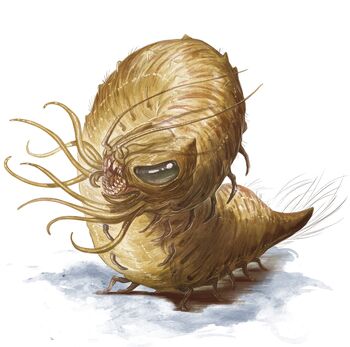
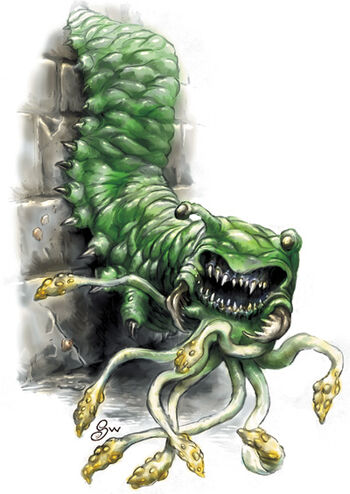
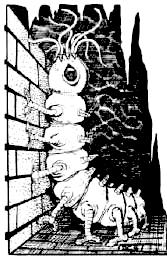
Carrion Crawler
And we start off with this nasty, nasty giant maggot-centipede monster called the Carrion Crawler, which is, again, one of the oldest monsters in D&D, showing up all the way from the very first edition. And it's a pretty neat, simple monster concept. Whichever edition you choose, the Carrion Crawler tends to take the form of this massive, giant worm creature that has inspirations from maggots, centipedes, beetle grubs, and always has a mass of spooky tentacles jutting out of its mouth. In later editions, from 3E onwards, they also have a massive, fanged mouth in the middle of that mass of tentacles. And, true to its name, the Carrion Crawlers are all carrion-feeders, eating carcasses and bones, and tends to reside in places like sewers, marshes and dungeons where dead bodies are plentiful. Nothing too fancy about it, it's just a giant tentacle-faced monster maggot-worm which eats corpses, and is very much willing to make you and your party into extra corpses, making use of ambush tactics and a paralyzing venom in its tentacles to subdue your party. Presumably, it's the same sort of "carrion feeders have nasty, disgusting saliva" thing going on. I do like that the Carrion Crawler is specified to like to crawl on top of ceilings of tunnels and dungeons, and it's monsters like these that make any seasoned D&D player to go "I LOOK AT THE CEILING!" any time they're in a dungeon.
I really do to see how this particular monster has evolved over the different editions, though. 1E and 2E Carrion Crawler is more caterpillar-like, albeit far more segmented and with more legs, ending in a face full of tentacles. 3E and 4E have something straight out of Berserk, with more octopus-like tentacles and a far, far larger green body with a menacing mouth. 5E goes back for the maggot-y look, and as much as I do find the 3E/4E Carrion Crawler to objectively be cooler, I will admit that 5E Carrion Crawler does fit into the scavenging maggot theme a lot better. I do tend to like my fantasy monsters to a bit more fantastical, though, so I'm pretty sure that the default mental image of the Carrion Crawler is the 3E/4E one.
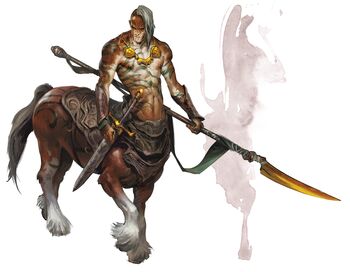
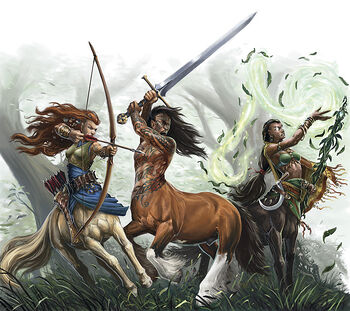
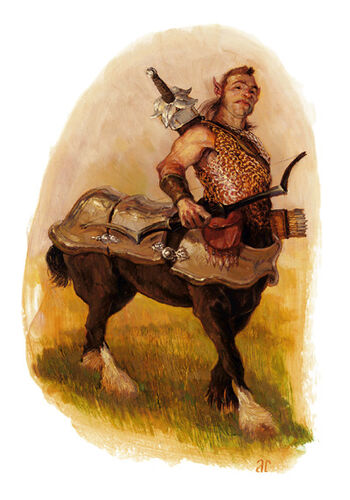
Centaur
And here we go from a D&D-original monster into one that's based on Greek mythology, which has the largest proportion of monsters that tend to have some sort of representation in like, video game, movies and tabletop games. I've never been particularly enthralled by the concept of a centaur, honestly -- though they're weird enough to be a neat little NPC your heroes might encounter, or maybe it's just straight-up a society that is allied to the good nations in your setting. D&D Centaurs aren't portrayed as the antagonistic barbarians that they tended to be in mythology, but rather are classified as a neutral good race that are wanderers that live in one with the nature. I feel like the D&D centaurs work far better as just flat-out NPC's or even modified to be a PC race, y'know?
Of course, with so many other depictions of centaurs in popular culture, there's nothing stopping your GM from blindsiding you in having one of the Centaur tribes in the campaign be, well, basically a Dothraki-style raiding band (which is the direction that World of Warcraft took with their almost-always-chaotic centaurs), or to have a couple of solitary, nomadic centaurs who aren't exactly good but aren't straight-up evil (which issomething I read in a 2E module, I believe?), or just straight-up make a centaur player character. I'm not sure if 5E has official rules for centaur PC's, but they are kinda ripe to be one, yeah?
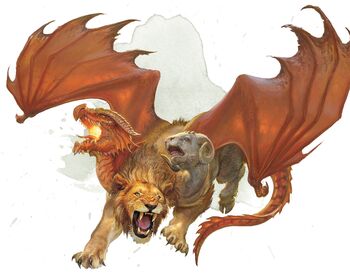
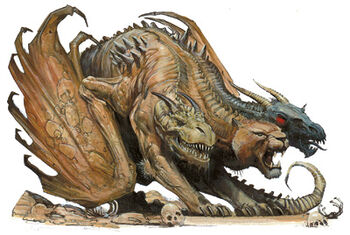
Chimera
And we go to yet another monster transplanted from Greco-Roman mythology, although D&D's Chimera has a very distinct change from the original inspiration that persists through all Chimera variants. Instead of being a hybrid made out of a lion, a goat and a serpent, they took out the serpent part and swapped it out for a dragon. Which, I suppose, in a game called Dungeons & Dragons, is only appropriate. It does make the Chimera look pretty damn threatening while also maintaining the general goofiness of this monstrous beast made of two of the setting's deadliest predators... and a fucking goat. All D&D depictions of the Chimera have been pretty consistent. Front body of a lion, three heads, rear body of a goat, dragon wings and tail. And they're all large monsters that fight with multi-attacks.
In later editions, the presence of the Chimera ends up being tied into the Demon Prince Demogorgon (who we'll probably meet eventually, and no, he has nothing in common with Stranger Things' Demogorgon) who's a two-headed monkey demon-man, and ended up creating the Chimeras in his own image. The Chimeras are portrayed to have the dragon's cruelty and greed, the lion's nature to hunt over a massive territory... and the goat's stubbornness to fight to the death. So that's what the goat part adds into the formula, then? Okay, if you say so. The Monster Manual did note that the dragon-lion-goat is the 'typical' chimera, so in theory, you could have a chimera combined from any three creatures... and, in fact, in 3rd Edition, one of the many 'templates' you could slap onto a creature was the "Chimeric Creature", represented with this glorious, glorious, Ankheg/White Dragon/Goat combination. That's glorious. The original version of this article had me just randomly theorizing on a bunch of random weird chimera combinations, but of course the official D&D material has beaten me to it. Just look at that glorious-looking stick legged abomination.
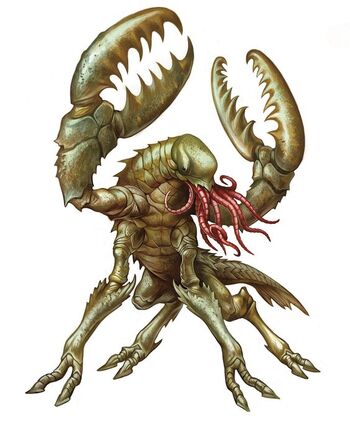
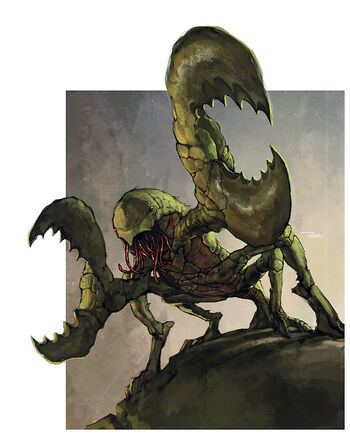
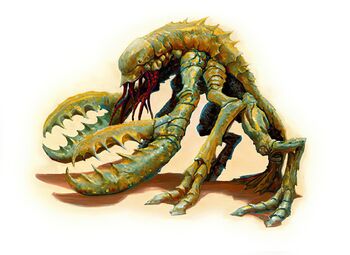
Chuul
First introduced in 3E, the Chuul are a pretty interesting race of monstrous lobster-people who ends up being tied to the Aboleth storyline. Remember those Aboleths? Ancient, timeless lamprey-monsters with mind-control powers? Like all eldritch abominations, they ended up heavily modifying a bunch of regular crustaceans and endowing them with sentience, creating the Chuul race. They're basically created back in the primeval ages where the Aboleths ruled the oceanic world, and the Chuuls were created to be their heralds to enforce their rule in the land outside of the ocean. With the Aboleth's empirse crushed under the coming of the gods, the Chuul race was mostly separated from their Aboleth masters... but they continue to do what the Aboleths created them to do -- collect humanoids, gather treasure and amass power.
They basically hang around the ruins of their old masters' civilization, waiting and using their ability to sense magic to hunt down and consolidate more and more magical artifacts and humanoid slaves and whatnot, waiting for the time that an Aboleth master would come and direct them to do something else. Design-wise... Chuuls are a pretty cool visual design, yeah? Not quite lobster or crawdad like, but similar enough that the crustacean origin is immediately evident. And then it's got a mouth full of tentacles, which in fantasy design is basically an instant shrug and nod that, yeah, some Cthulhu thing is going on here. I do like how they have a fun centaur-like gait thanks to how their limbs are arranged. Also do like their face and their tiny beady eyes. Overall, definitely a very welcome addition to the Abolteh backstory, and a pretty nifty monster in their own right!
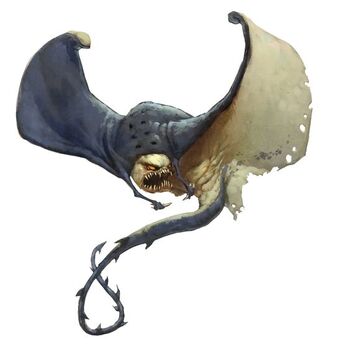
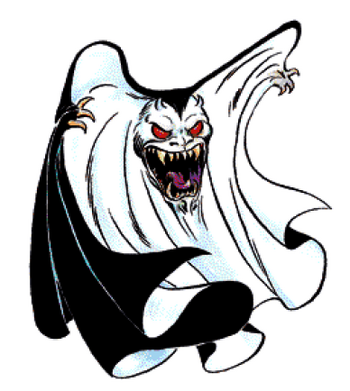
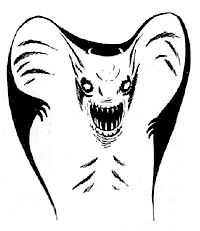
Cloaker
Cloakers are interesting! The original 1E and 2E version of the Cloakers are just straight-up evil cloaks with demonic faces snarling from within, looking more like a weird haunted blanket or curtain. And it's interesting how things ended up evolving over the years, because, well, frankly, some of the older monsters just are clearly there to be "ah ha, gotcha!", because back in 1E, so much of the monsters and creatures feel like they're designed to be obstacles whose sole purpose is to populate a dungeon, and less of being actually part of a fantasy world. 3E ends up reinventing the Cloaker and turned what's essentially a piece of cloth into this monstrous monster based on a manta ray that's able to fly through the air and look like a dark, leathery cloak at rest. And anyway, they hang out in dark caves and dungeons anyway, as long as they can camouflage themselves, it doesn't really matter if they look like a flying manta ray with a screaming demonic face instead of a chunk of leather that presses flush against the ceiling.
I do really like how the horn-like protrusions on the manta ray ends up being adapted into some devil-like horns, and while it does have a very demonic angry face where a manta ray's head should be, those black dots on its spine are actually additional eyes that allow it to perceive silly walking adventurer snacks while it's cloaked. The Cloakers are also aberrations (which is probably why its biology is so weird) and mostly live in the Underdark, which is this network of subterranean caves that run through the entirety of the settings in D&D, and the Underdark's filled with a lot of crazy horrors. Like the Cloakers! Which, in addition to being dicks that hide in the walls and attack weakened prey, are also able to create phantasmal illusions as well as unleash these subsonic haunting moans that will cause everyone around it to feel sensations of doom and dread. It's gone a long way from being a silly 'gotcha' prank!
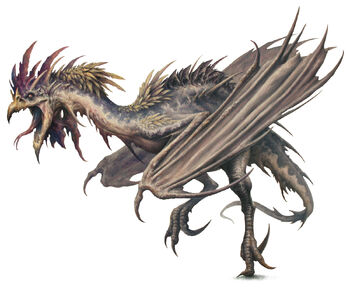
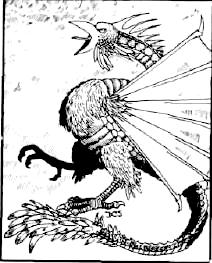
Cockatrice
A classic monster from English mythology, the Cockatrice tends to be a bit overlapping with the Basilisk in some other settings. D&D basically chose to really separate the two by really harping on the basilisk as a lizard, while the Cockatrice is... well, a lot more chicken-like than serpentine, even though the mythological cockatrice is technically a serpent with a chicken's head, not D&D's dragon-chicken creature. Like the Basilisk and theGorgons Medusas, Cockatrices are able to transform flesh into stone, and there's a certain kind of indignity in knowing that it's a goddamn chicken that turned you into a garden ornament. 5E's Cockatrice is pretty damn badass, still having a chicken head, but ends up looking like a twisted, gangly version of a theropodal dinosaur, and with dragon wings instead of feathers. These Cockatrices are still chicken-sized, though, despite 5E and 4E both having pretty badass depictions as far as chicken-monsters go, and the 5E monster manual describes the Cockatrices as not really being much of a threat... they're just really aggressive and territorial, meaning that it's the D&D-land's equivalent of a goddamn goose, except the wounds that the cockatrice inflicts turns you into stone as opposed to just potentially giving you tetanus. A pretty neat little monster, regardless, and one that I've always found to be pretty hilarious.
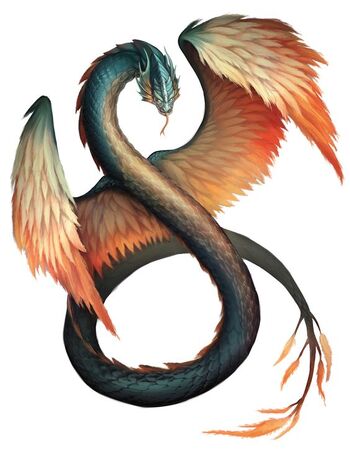

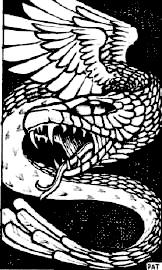
Couatl
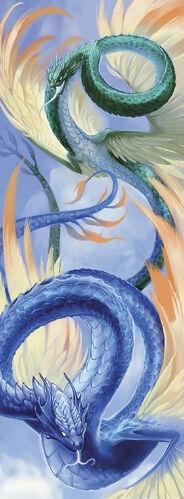 And here we go with another Celestial monster in the Couatls. Taken from the Nahuatl word meaning 'serpent', D&D's Couatls are very loosely based on the Meso-American deity Quetzacoatl (not to be confused with the pterosaur of the same name), although mostly just in the theme of being a feathered serpent. And... and for the longest time, I thought Couatls were actually a monster that originated from some mythology, the way that cockatrices or cyclopses or chimeras do. But apparently other than the "feathered serpent" nod to the mythological Quetzacoatl, the Couatls are basically original to D&D. And they're lawful good angel-snake friends! They're essentially angelic messengers, and while not as powerful as real angels, they are definitely a good bunch of mystical beings that sort of just hang around and do good deeds, waiting for some prophecy or safeguarding the heirs of creatures that allied with them in the past. Couatls can shapeshift and will basically just stick around as hidden messengers and guardians until they are really needed. They're not exactly immortal, but are very, very long-lived, and they'll produce offspring only if they sense their impending demise and realize that their task on the mortal plane isn't done yet.
And here we go with another Celestial monster in the Couatls. Taken from the Nahuatl word meaning 'serpent', D&D's Couatls are very loosely based on the Meso-American deity Quetzacoatl (not to be confused with the pterosaur of the same name), although mostly just in the theme of being a feathered serpent. And... and for the longest time, I thought Couatls were actually a monster that originated from some mythology, the way that cockatrices or cyclopses or chimeras do. But apparently other than the "feathered serpent" nod to the mythological Quetzacoatl, the Couatls are basically original to D&D. And they're lawful good angel-snake friends! They're essentially angelic messengers, and while not as powerful as real angels, they are definitely a good bunch of mystical beings that sort of just hang around and do good deeds, waiting for some prophecy or safeguarding the heirs of creatures that allied with them in the past. Couatls can shapeshift and will basically just stick around as hidden messengers and guardians until they are really needed. They're not exactly immortal, but are very, very long-lived, and they'll produce offspring only if they sense their impending demise and realize that their task on the mortal plane isn't done yet.
5E Couatls have a trait that they cannot lie, but can withhold information, be vague, or allow others to jump into wrong conclusions as long as it's done in the name of protecting something sacred. I do find this little trait to be fun, and it's definitely a neat little RP-ing moment. While reduced to a slightly more mundane messenger in 5E, I remember 3E and 4E Couatls as far, far more angelic, godlike messengers. Again, while the D&D sourcebooks give a guideline for a specific iteration of the world, it encourages you to basically take whichever version you like in world-building. Regardless, these are pretty cool!
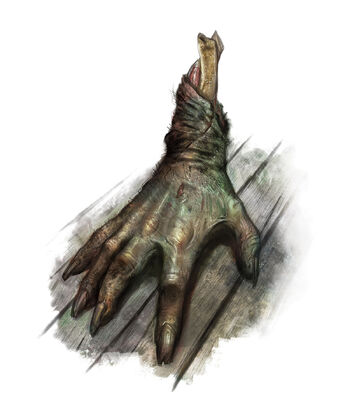
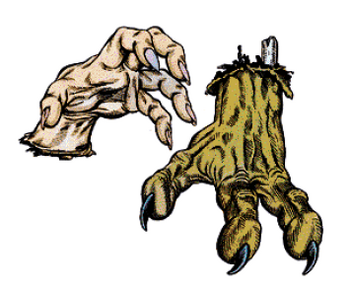
Crawling Claw
First showing up in 2E and reminding everyone of the Thing from Addams Family is the Crawling Hand, which is a little teeny tiny reanimated hand. The backstory here is that these hands are specifically made from the hands of a murderer (and, importantly, one that hasn't been otherwise turned into another undead creature or has passed on), but the thing is that these little reanimated parts of a body can be hilarious and spooky depending on the situation. Sometimes both at the same time, y'know? There's just something about a disembodied hand (or head, or eyeball) that's just both whimsical but also pretty grisly at the same time. The Crawling Claw is unique in that thanks to the fact that it's made by a ritual, it can't be turned or controlled by other spells, basically just bound as an extension of their creators. They're basically like little dumb servants that can receive orders, but can only do very, very simple ones. Which is fair, since this is a literally brainless creature. It otherwise has the killing intent and general nastiness of the murderer that it was when it was alive, and can go around on a killing spree... which, again, while kinda spooky, is also hilarious to imagine this little hand just scuttling around like a bizarre spider, choking and stabbing everything it passes.
5E's Monster Manual describes a little variant called a Living Claw, made out of the severed hand of a still-living murderer and can basically be reattached to the hand of the murderer as if it's never popped off. And while this might sound like an awesome feature for the murderer, when the Living Claw separates from the body, the living body falls into a coma, while killing the Claw also kills the murderer, which means that you kinda need to get a bit creative to really try and make the Living Claw feel like an advantage.
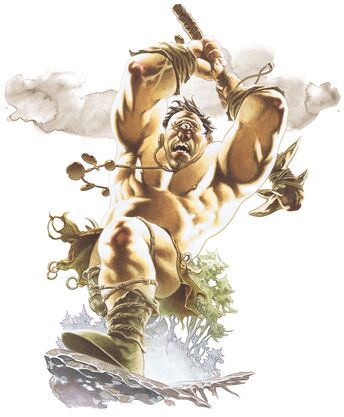
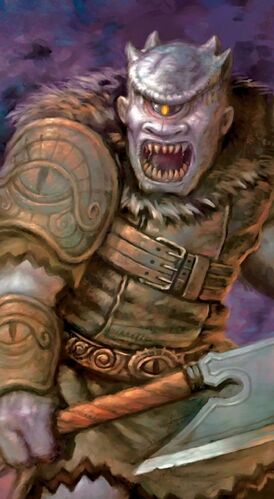
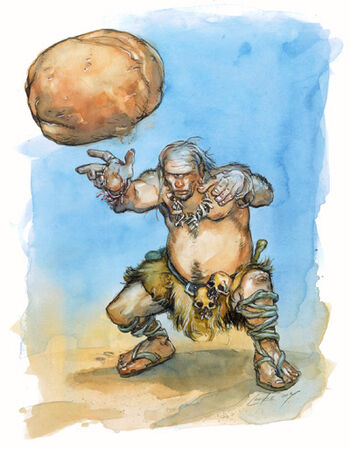
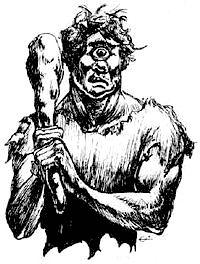
Cyclops
And here we go, yet another creature taken wholesale from Greco-Roman mythology. And I must confess that I tended to find the 'giant' enemies in D&D to be a bit... samey? Particularly the ones that are just huge human dudes, like ogres and hill giants. Cyclopes have... one eye, which makes them a bit different? Cyclopes are basically a bunch of giants that sort of live as solitary wanderers in wild-lands, not having any real religion or culture, and just sort of hang around alone or in small family groups. And it also has herd animals. They're so dumb that the Monster Manual notes that your warlock, cleric or caster could fool the Cyclops into worshipping them with a display of magic. Okay! I think they were considered fey creatures in 4E. Ultimately, kinda boring, but sometimes all you need is a big giant brute in a campaign.
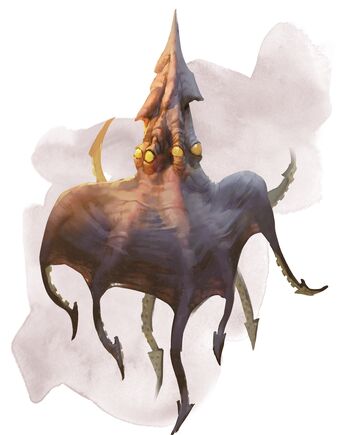
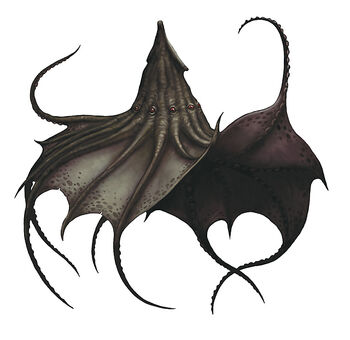
Darkmantle
One of my favourite monsters from 3.5E, and one that's shown up in both 4E and 5E. I love these things! Just by looking at the picture, you kind of think that the Darkmantle's just a vampire squid, a squid with a bunch of cape-like protrusions between its tentacles. Sure, its eyes are kinda weird since it has a bunch of it running around its body, but it's just a weird squid, y'know? And then you kinda read a bit more into its backstory, and find out that Darkmantles are ambush predators in caves. They're basically living in the same Underdark caverns and occupy a similar niche to the Cloakers, where the Darkmantles cling to ceilings and remains still and pretends to be a stalactite... something that's not too hard to imagine when you both look at the shape of this thing, and when you realize that real-life octopi and squids have the ability to change their colour and even consistency of their flesh. And then the Darkmantle will drop down, unfurling itself... and it can unleash a Darkness Aura that engulfs the area with magical darkess while it swoops down and wraps itself around some foolish adventurer's head, Facehugger style. Which is, again, a pretty awesome adaptation of a squid's ink-ejecting ability, albeit used offensively to hunt.
I do really like that the caverns of the Underdark, in addition to being filled with all sorts of hideous monsters and abominations, also has this bizarre ecology where the Darkmantles basically fill in the ecological role of small ambush predators, sort of like the hyenas to the Cloakers' lion, y'know?
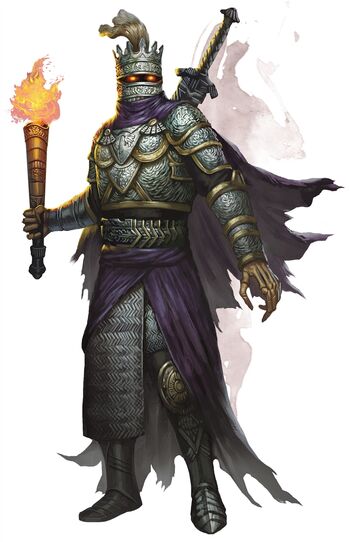
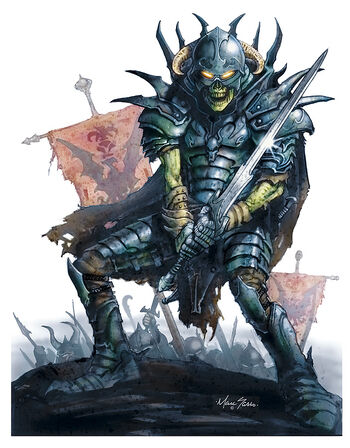

Death Knight
Also known as "Blizzard Industries' favourite D&D monster", considering the sheer amount of times they tried to make Death Knights a thing in their Warcraft franchise, and how it technically refers to several different forms of undead in the Warcraft universe. And honestly, it was kinda surprising for me to go to D&D, look at the inspiration... and realize that it's just one among many, many different types of stronger undead monsters. Arthas Menethil this ain't! The D&D Death Knight, at least the 5E version (it's another long-runner, being around since 1E, and is one of the monsters that are just plain fan favourites) is a paladin that falls from grace without atonement, and is transformed by dark forces into an undead knight full of hate and evilness, commanding a bunch of lesser undead minions. And whether it's the far more skeletal, zombie-like 3E variant or the far more sinister-looking "glowing eyes within a suit of armour" from 5E, Death Knights are pretty dang cool.
Interestingly, what makes a Death Knight particularly unique is that it can still cast divine paladin spells (other than healing), even though normally that would be anathema to undead creatures. Death Knights are basically immortal, continually rising from its destruction, until it truly atones or finds redemption... and if you're horrible enough that you've turned into a Death Knight upon death, I don't see that happening for most Death Knights out there. One of the most memorable villains in the 2E books is Lord Soth, who's got a long backstory.
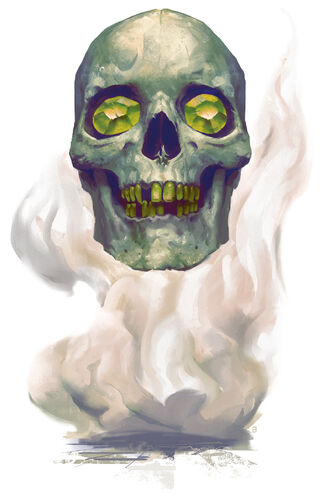

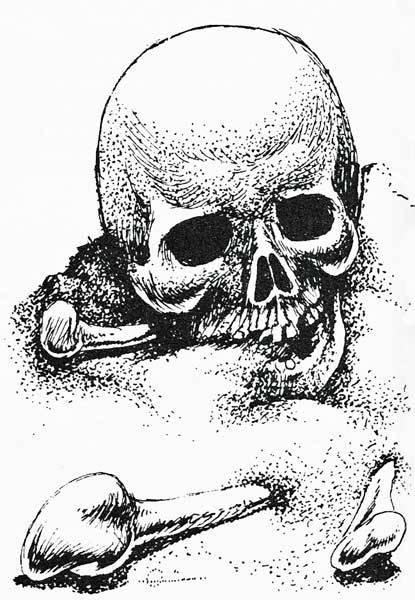
Demilich
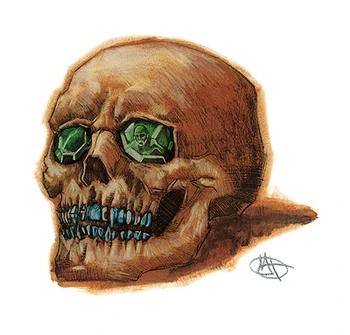 And the reason why the Demilich is so differently portrayed is due to how the creative team feels about the Tomb of Horrors, one of the most iconic dungeons from the first edition meant to be a 'meat grinder' to kill as many adventurers as possible, by being what's essentially Dark Souls, but even more dickish. And the main big bad in the Tomb of Horrors is a Demilich called Acererak -- who embraced the form of the Demilich, treating it as a natural evolution of undeath, accepting that he would eventually become a disembodied consciousness that will travel the planes, while turning the massive Tomb of Horrors into a massive phylactery with which it's going to absorb a vast amount of foolish adventurer souls to fuel his eventual ascension. This sort of greater Demilich, or a "Demilich of Acererak's Path", is far more conscious than the reactionary, withered regular Demilich, and basically exists in tandem with a lair that also functions as a huge soul-trapping machine, allowing said Demilich to retain its sentience.
And the reason why the Demilich is so differently portrayed is due to how the creative team feels about the Tomb of Horrors, one of the most iconic dungeons from the first edition meant to be a 'meat grinder' to kill as many adventurers as possible, by being what's essentially Dark Souls, but even more dickish. And the main big bad in the Tomb of Horrors is a Demilich called Acererak -- who embraced the form of the Demilich, treating it as a natural evolution of undeath, accepting that he would eventually become a disembodied consciousness that will travel the planes, while turning the massive Tomb of Horrors into a massive phylactery with which it's going to absorb a vast amount of foolish adventurer souls to fuel his eventual ascension. This sort of greater Demilich, or a "Demilich of Acererak's Path", is far more conscious than the reactionary, withered regular Demilich, and basically exists in tandem with a lair that also functions as a huge soul-trapping machine, allowing said Demilich to retain its sentience.
"Player Character" Races
Character creation in D&D is a nerve-wracking process. And as anyone who's ever created a customizable character in Elder Scrolls, World of Warcraft or any game where you get to pick from a selection of race-gender-and-class combination, it's particularly nerve-wracking... particularly since you're going to be actually acting out scenes and role-playing as these characters. Do you go for a stable, relatable human character? How about a snotty elf wizard, an angry orc barbarian, a dwarven paladin, or an angsty Tiefling or Drow who are rejected from their own people? Do you just take a character you like from fantasy fiction, and basically make up Illidan Stormrage or Gandalf the Grey in D&D form? Or do you go super-adventurous and play a monster as your PC? A goblin, a kobold, a tabaxi, a bullywug, a lizardman, a goliath, a kenku, a centaur... the sky's the limit, y'know? And that's before throwing in classes, which I will not be covering.
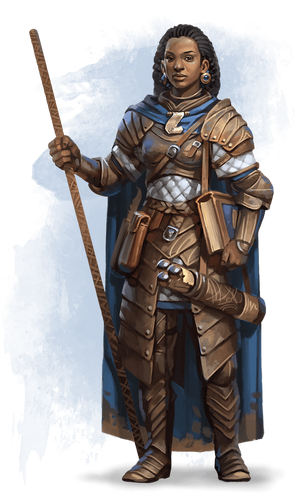
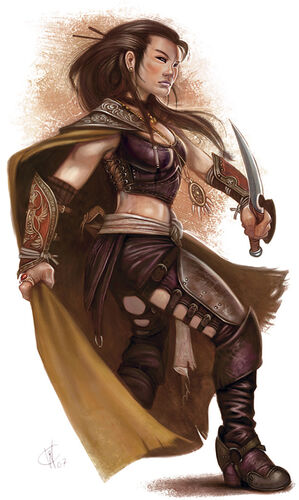
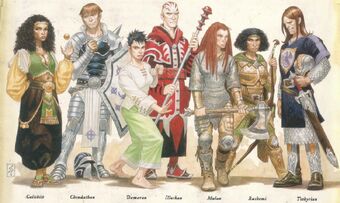
Human
The most basic, default race, because, hey, unless there's some bizarre freak of scientific breakthrough in the future, if you're reading this page, you're absolutely likely to be a human. And thus... humans are... humans, y'know? They're like bread. They're the default choice, and they're sort of just there, jack-of-all-trades, trying to sort of copy a fantasy version of real-life medieval culture. The whole point of humans in D&D races is that they're so short-lived that it's human spirit and determination that makes them extra badass or whatever, basically being the pioneers of conquest,m innovation and trade because they're go-getters, and they like to make friends and everything, y'know?
The 5E Player handbook basically divide humans into several different sub-cultures based on the setting, but, y'know, it's not that interesting. We've got the Calishite, Chondathan, Damaran, Illuskan, Mulan, Rashemi, Shou, Tethyrian and Turami, but man, unless we're getting into the specific history and politics of the different nations, they're just all kinda humans, y'know? They're humans. You're a human. I'm a human. It's all right to want to be a human, although I personally see so many other interesting things I could role-play as in this fantasy world, that I probably won't ever play a human player character simply because there's so many other more interesting things out there. But hey, you do you!
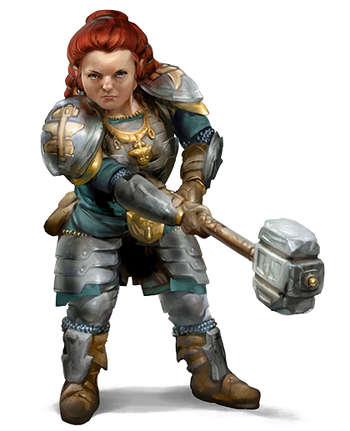
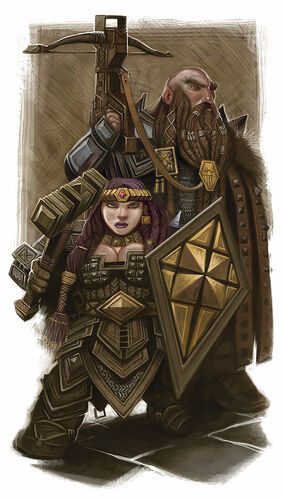
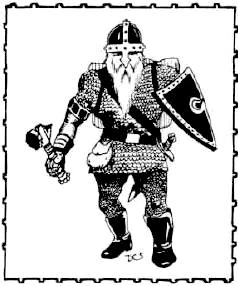
Dwarf
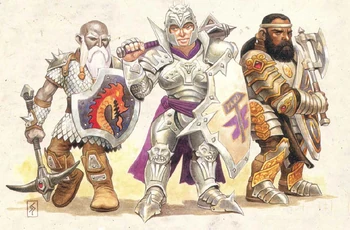 Let's get the Tolkien races out of the way first. And I don't hate on the Tolkien quartet of human/dwarf/elf/hobbit, but it's just that... they're essentially all humans. One's just a bit shorter and drunker, one's even more shorter, and one's tall and immortal. And they kind of show up in nearly all fantasy games and settings. Which is nice and good, but dwarves are always likable while also tending to remain static. After all, our dwarves are all the same, to quote TV-Tropes. They're short, stout, live in mountains, have a huge mining culture, have a huge familial culture, have ancient kingdoms, drink a lot, and live longer than humans. I did at least enjoy the very ancestral and tradition-mired flavour of dwarven culture, and playing a dwarf gives you a lot of excuse to lob around more cuss words than a sailor. Dwarves in 5E are divided into two subraces, the Hill Dwarf , which have keener senses, deeper intuition and stronger resilience, and the Mountain Dwarf, who are hardier and a bit stronger. Plus the Duergar, which we'll cover later because they also count as a monster of their own!
Let's get the Tolkien races out of the way first. And I don't hate on the Tolkien quartet of human/dwarf/elf/hobbit, but it's just that... they're essentially all humans. One's just a bit shorter and drunker, one's even more shorter, and one's tall and immortal. And they kind of show up in nearly all fantasy games and settings. Which is nice and good, but dwarves are always likable while also tending to remain static. After all, our dwarves are all the same, to quote TV-Tropes. They're short, stout, live in mountains, have a huge mining culture, have a huge familial culture, have ancient kingdoms, drink a lot, and live longer than humans. I did at least enjoy the very ancestral and tradition-mired flavour of dwarven culture, and playing a dwarf gives you a lot of excuse to lob around more cuss words than a sailor. Dwarves in 5E are divided into two subraces, the Hill Dwarf , which have keener senses, deeper intuition and stronger resilience, and the Mountain Dwarf, who are hardier and a bit stronger. Plus the Duergar, which we'll cover later because they also count as a monster of their own!
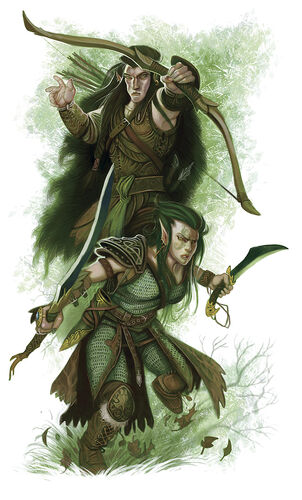
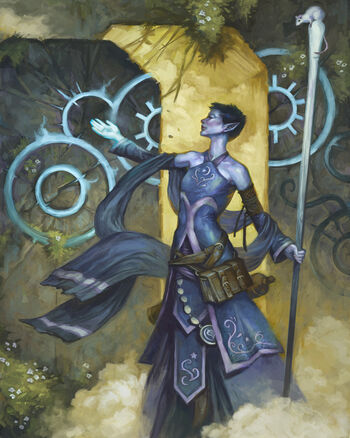
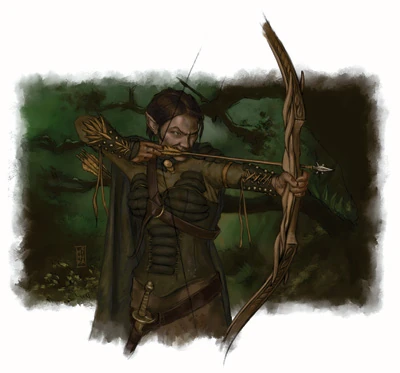
Elf
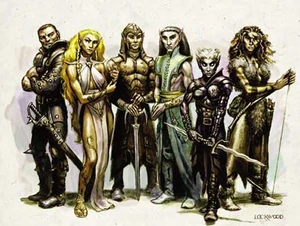 Unlike dwarves, our elves are different. Be it Elder Scrolls, World of Warcraft, the Witcher, Baldur's Gate or any given fantasy setting with elves, there will be a lot of variety between an elf from setting to setting, with the only thing that tends to be common is that the elves have pointy ears, live for a very long time (or are straight-up immortal) and tend to be dismissive or outright xenophobic of humans. And that's without getting into the fact that most settings have different sub-types of elves! Warcraft has high elves, blood elves, night elves, void elves and nightborne. Elder Scrolls has high elves, dark elves, wood elves and the orcs. So on and so forth, and throughout D&D's many different editions and settings, the different editions don't exactly agree on what constitutes an 'elf' or an 'eladrin' or anything in-between. Still, in most player handbooks, the elves tended to follow the simple Tolkien formula. They're immortal, living in the world but not exactly part of it thanks to their pseudo-immortality. They live in massive palaces or sometimes in ancient forests. They're good-aligned, if not the nicest people around, and they love art and poetry, and are attractive. 5E divides the elves into three main subraces: High Elves, Wood Elves and Dark Elves. Or the Drow -- we'll cover the Drow, like the Duergar, seperately because they have an entry in the Monster Manual.
Unlike dwarves, our elves are different. Be it Elder Scrolls, World of Warcraft, the Witcher, Baldur's Gate or any given fantasy setting with elves, there will be a lot of variety between an elf from setting to setting, with the only thing that tends to be common is that the elves have pointy ears, live for a very long time (or are straight-up immortal) and tend to be dismissive or outright xenophobic of humans. And that's without getting into the fact that most settings have different sub-types of elves! Warcraft has high elves, blood elves, night elves, void elves and nightborne. Elder Scrolls has high elves, dark elves, wood elves and the orcs. So on and so forth, and throughout D&D's many different editions and settings, the different editions don't exactly agree on what constitutes an 'elf' or an 'eladrin' or anything in-between. Still, in most player handbooks, the elves tended to follow the simple Tolkien formula. They're immortal, living in the world but not exactly part of it thanks to their pseudo-immortality. They live in massive palaces or sometimes in ancient forests. They're good-aligned, if not the nicest people around, and they love art and poetry, and are attractive. 5E divides the elves into three main subraces: High Elves, Wood Elves and Dark Elves. Or the Drow -- we'll cover the Drow, like the Duergar, seperately because they have an entry in the Monster Manual.
High Elves are basically Tolkien elves. Keen of mind, master of at the very least the basics of magic, and they can fall into one of two categories: the haughty, reclusive dicks that believe themselves superior to everyone else, and a more common one that appreciates humans and other non-elven races. Depending on the setting, these high-elves can have skin that are like humans, or glow like the sun. Wood Elves, meanwhile, are basically the nature-loving elves, what the Night Elves of Warcraft and the Bosmer of Elder Scrolls are based upon. Also known as wild elves, green elves or forest elves depending on the setting, they live in the jungle, have more coppery or green skin, and are survivalists in the jungle. And that's what we're covering, since we're saving the Drow for later. Believe me, between the moon elves, the Eladrin, the aquatic elves, the wild elves and like a couple half-dozen more variants, there are a lot of elves in D&D.
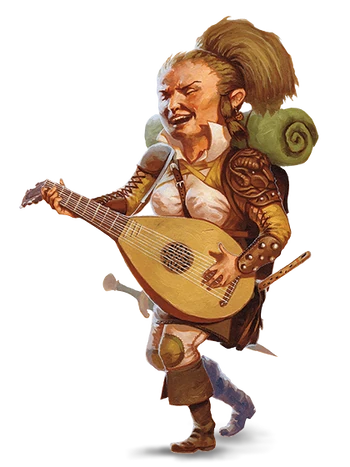
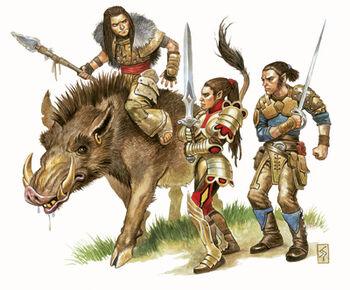
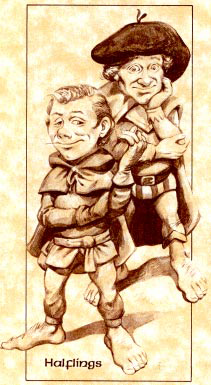
Halfling
The trademark-friendly version of "Hobbit", I honestly have to keep reminding myself that halflings and gnomes are two separate races. They're both tiny, happy little humans! Halflings are basically little people who get by living happy, practical lives, trying to live from day to day as simply as they can, so long as they're happy. Family, friends, and maybe the odd dream of gold and glory! They're basically Hobbits, and I don't mean that in a demeaning way. With all of the asshole races in the world of D&D, it's neat to have a race or two whose whole point is that they're happy god damn it and they're nice and good and wholesome. Of course, not all Halflings are like, happy Frodo Baggins people who live in their shires and keep happy farmlands and whatnot, and you're free to play your Halfling as an angsty emo murder machine, just as you're free to play a Drow bard with stage-fright. Again, D&D allows you to literally make any character you want. Just don't try to annoy your DM too much. 5E gives two subraces of Halflings, the Lightfoot and the Stout, which are more like clans and societies more than subraces. Lightfoots are basically halflings that can easily hide from notice. Stouts are hardier and are more resistant to poison. I've always found halfling to be probably the most boring race out there, but it's worse because...
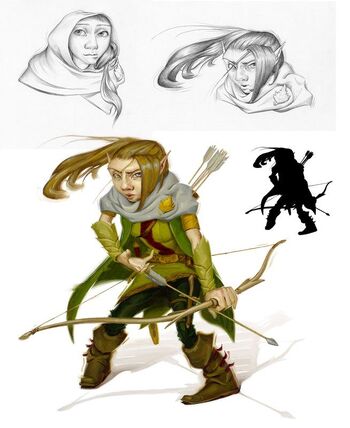
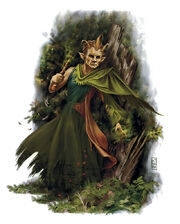
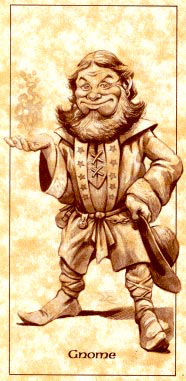
Gnome
...gnomes exist. Again, I keep forgetting Gnomes are a separate race form Halflings in D&D. I guess the very distinct identity that the World of Warcraft gnomes have, being a race of child-like, crazy tinkerers with a whole load of steampunk machinery and fancy pink hair is so, so much more distinctive than D&D's Gnomes, which are basically... kind of the same like halflings, but a bit more badass, but are also long-lived. Depending on the edition, they have some Fey-ness to them, and at least in 5E, some of the Warcraft-style tinkering have bled over to D&D Gnomes. Which is neat. The gnomes as a race are basically a lot more panicky and excitable than halflings. I honestly have the gnomes and halflings blur together in my head as "the short races that aren't dwarves", and always felt that they're pretty redundant. I think I like the gnomes a bit better, because while it's not always shown to the forefront as PC's, gnomes have a fair bit more nods to the fair folk, being able to manipulate illusions to hide their forest homes. And they have super-long names, too, apparently. Gnomes in 5E are divided into Forest Gnomes, which are all about illusions and stealth and pretty secretive folk, basically adapting a whole fairy-like quality to them, being also able to speak with animals. Meanwhile, Rock Gnomes are basically WoW gnomes that are able to tinker with machinery and artifices.
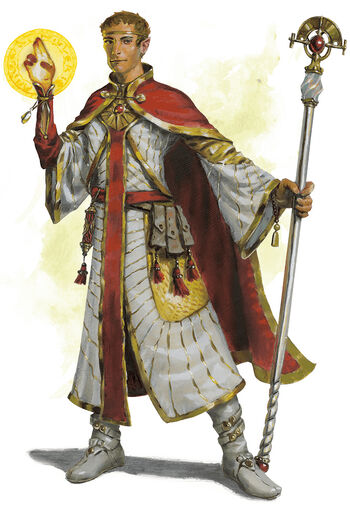
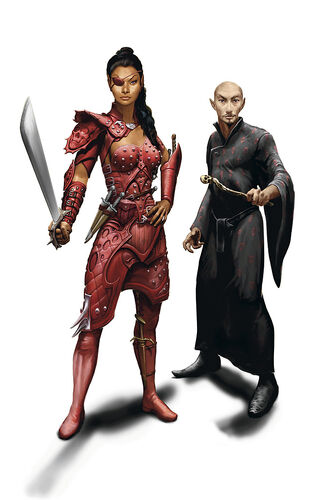
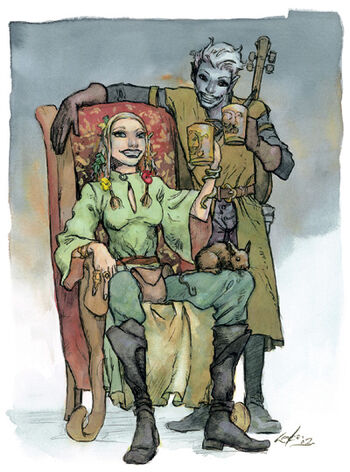
Half-Elf
Half-elves are a race that's half-human and half-elven, combining the curiosity, inventiveness and ambition of humans with the refined tastes and love of nature of the elves. And while they don't live quite as long as their elven parents, they definitely live a lot longer than their human kin... which means that whichever side of the family they live with, it's going to be awkward. Either seeing their human buddies wither and die while they remain young, or grow way too quickly among the elves and watch as their peers remain children. It's a pretty interesting backstory, although in practice I've always sort of found that most half-elf characters tended to play off as being a bit too similar to essentially yet another Spock clone. That's not to say that the race is boring, and they certainly could be fun (my first D&D character in a proper long campaign was a half-elf, actually!) I always felt like they lacked the pizzazz of the culture clash that would be brought forth by having, say, a half-orc character.
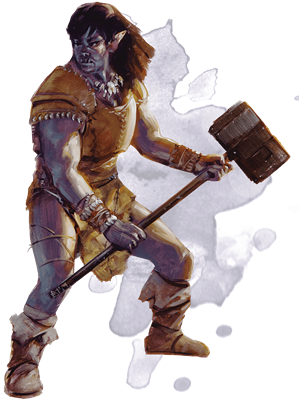
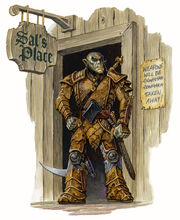
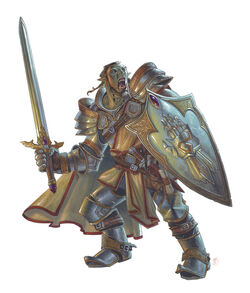
Half-Orc
Because, shit, the stark difference from the more constructive human society and the destructive orcs is a lot more fun to roleplay compared to "man, all my relatives age differently than I do, it sucks". And sure, a half-elven story of angst would probably make a nice novel, but it's not actually fun to role-play on a tabletop game, y'know? Whereas being a half-orc leads to a lot more fun encounters. The humans see the half-orc as barbaric brutes, while the orcs will probably view the half-orc as weak half-breeds. And while originally intended to be a way for the players to actually play as orcs while sidestepping the fact that all orcs are super-evil in D&D, I do like the narrative of having to try and find your own place, whether it's as a nomad, or part of a human society, or part of an orc clan. Because while half-orcs aren't as smart as humans or as strong as full-blooded orcs, they're smarter than the average orc and stronger than the average human.
Originally, half-orcs have the... unfortunate origin story of basically being born when orc tribes invaded human tribes, which kinda implies rape, but newer editions basically quashed this quickly by making sure that, hey, there have been history of orc and human tribes making alliances that are sealed by marriages and whatnot. Like the half-elves, the half-orcs don't really have much of a culture to call their own, most of the time either serving as nomads or just shuffling into the cultures of one of their parents. In 5E the half-orcs sometimes experience the mark of Gruumsh, where the orcs' barbaric god of combat will sometimes whisper to half-orcs and basically try and lull them into doing some angry, ragey stuff and this basically makes most orcs a lot more emotionally volatile than the other humanoid races.
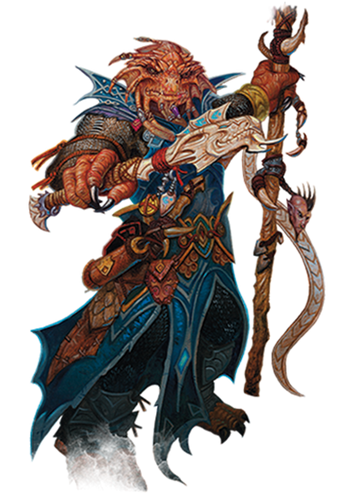
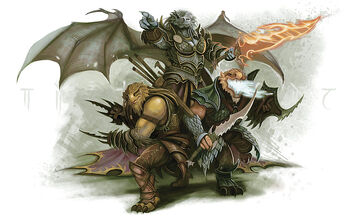
Dragonborn
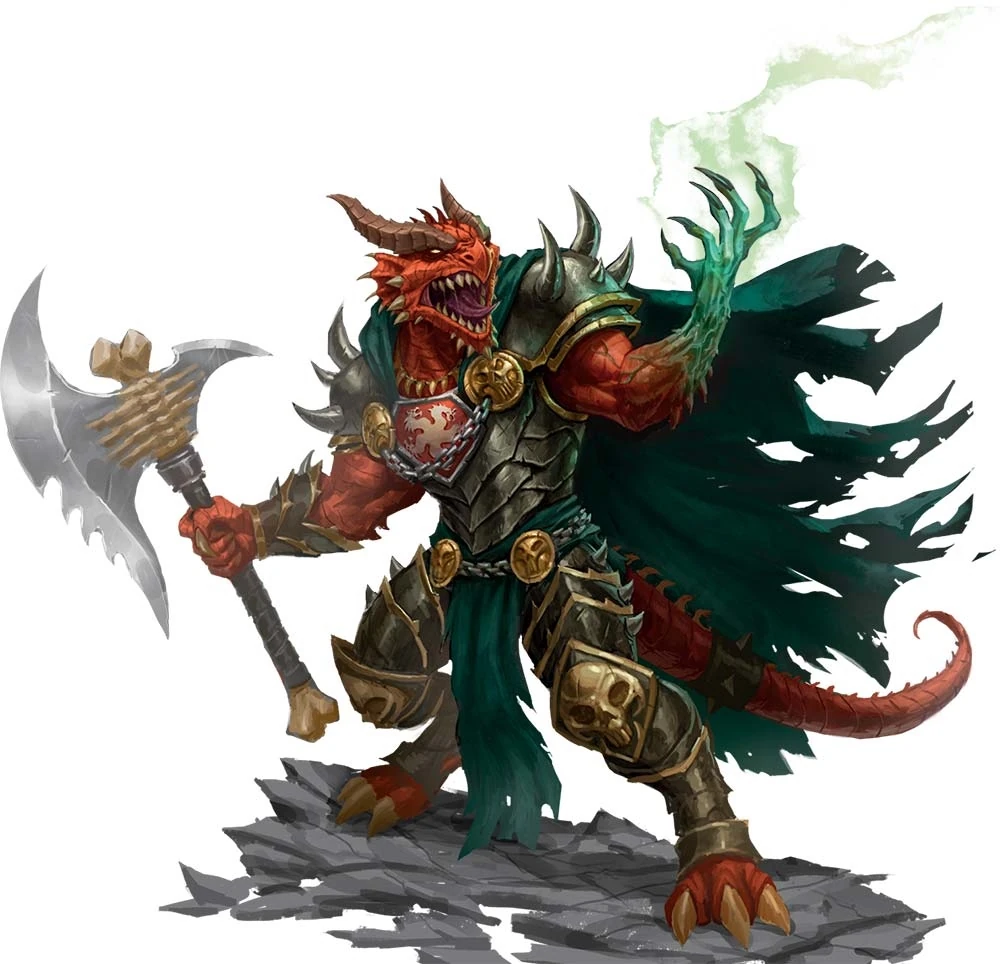 And here we go with the races introduced as core races in 4E, which... is relatively new, but has been around for long enough that I basically think of them a lot more readily than the gnomes or the half-elves. And, well, the Dragonborn is basically a race of humanoids who has some dragon ancestry in the past. Depending on the sourcebook, they're either the result of a dragon/human pairing, or an entirely separate cousin race created from the blood of a dragon good. Also... no, there is relation to the Dovahkiin; Skyrim was released a couple of years after the 4E core books. The Dragonborn are basically humanoid dragon-men, with the heads and scales of dragons, and generally being rare enough in most settings that most people outside of cosmopolitan cities regard them with confusion. These dragon-men hatch from eggs and are basically their own unique race, and most of the 'standard' classic Dragonborn lack wings and tails... although in 4E, some enemy variants do have them. Overall, pretty cool stuff -- everyone likes dragons, right? So I can definitely see why the team ended up making this dragon-man race as a core race as opposed to using something like the less-impressive Kobold or Lizardfolk race.
And here we go with the races introduced as core races in 4E, which... is relatively new, but has been around for long enough that I basically think of them a lot more readily than the gnomes or the half-elves. And, well, the Dragonborn is basically a race of humanoids who has some dragon ancestry in the past. Depending on the sourcebook, they're either the result of a dragon/human pairing, or an entirely separate cousin race created from the blood of a dragon good. Also... no, there is relation to the Dovahkiin; Skyrim was released a couple of years after the 4E core books. The Dragonborn are basically humanoid dragon-men, with the heads and scales of dragons, and generally being rare enough in most settings that most people outside of cosmopolitan cities regard them with confusion. These dragon-men hatch from eggs and are basically their own unique race, and most of the 'standard' classic Dragonborn lack wings and tails... although in 4E, some enemy variants do have them. Overall, pretty cool stuff -- everyone likes dragons, right? So I can definitely see why the team ended up making this dragon-man race as a core race as opposed to using something like the less-impressive Kobold or Lizardfolk race.
And we haven't actually met actual dragons yet in our coverage of D&D monsters, but as a quick primer, there's ten main kinds of dragon -- five chromatic ones, and five metallic ones -- and your Dragonborn character's going to have a specific scale that will then grant it a special breath weapon, even if generations of Dragonborn intermingling have caused a slightly more uniform appearance for the race. They basically can unleash a breath weapon depending on their heritage. Fus ro dah away! Dragonborns live in clans and basically have a similar outlook on their clan and life as dwarves -- the clan comes first, and never bring dishonour to the clan, and they commit very hard to their role within the clan. The 5E player's handbook notes that Dragonborn aren't as common in the world of D&D, and basically will tend to be treated with suspicion. "Oh no, a giant kobold! Oh no, a servitor of a dragon!" Overall, though, as perhaps one of the few basic core races to actually look monstrous in some way, I am a huge fan of the Dragonborn. And that's before we get to the obligatory Skyrim jokes, which, believe me, will inevitably happen in your sessions if you play a Dragonborn character.

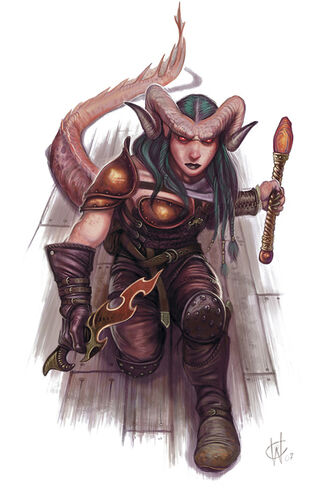
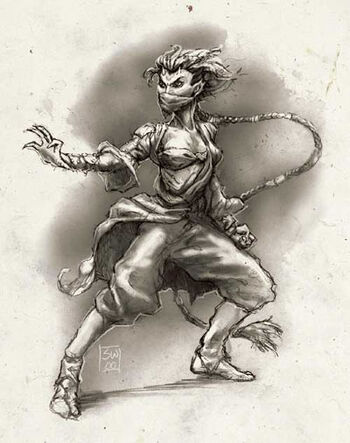
Tiefling
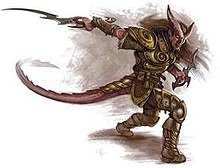 And if you want to take being an evil outcast even further, you can become a Tiefling, who's straight-up half demon! Or, well, half devil or half daemon or what-have-you. Tieflings (appearance wise they're kinda similar to WoW's Draenei) were introduced as an enemy monster in 2E, then one of the potential "planetouched" races in 3E with its counterparts being the Aasimar (half-celestial) and the various Genasi (half-elemental). Being half-devils and people loving their sexy half-devils, the Tieflings, perhaps a bit obviously, rose to such popularity that they became a core race in 4E. And apparently there's a whole slew of love-hate relationship with them? I was surprised to learn that this is a thing, because I've always found Tieflings as being pretty cool, particularly as a differently-flavoured version of Drow. 5E's Tieflings note that they're not always the direct offspring of a demon and a mortal, but simply because they have the bloodline somewhere in their ancestry. It's because of a pact struck generations ago between their ancestors and the devil prince Asmodeus (or whatever evil deity you want in your setting), meaning that an ancient sin has cursed their entire bloodline. Sucks to be them, now stuck with being bullied and ostracized for being born as who they are! Of course, depending on the specific character, maybe the Tiefling in question actually deserves the reputation -- years of mistrust and oppression tend to cause a lot of Tieflings to end up believing all the talk about "demon blood" and cause them to become evil anyway, even though, unlike Cambions, Tieflings aren't actually predisposed to evil.
And if you want to take being an evil outcast even further, you can become a Tiefling, who's straight-up half demon! Or, well, half devil or half daemon or what-have-you. Tieflings (appearance wise they're kinda similar to WoW's Draenei) were introduced as an enemy monster in 2E, then one of the potential "planetouched" races in 3E with its counterparts being the Aasimar (half-celestial) and the various Genasi (half-elemental). Being half-devils and people loving their sexy half-devils, the Tieflings, perhaps a bit obviously, rose to such popularity that they became a core race in 4E. And apparently there's a whole slew of love-hate relationship with them? I was surprised to learn that this is a thing, because I've always found Tieflings as being pretty cool, particularly as a differently-flavoured version of Drow. 5E's Tieflings note that they're not always the direct offspring of a demon and a mortal, but simply because they have the bloodline somewhere in their ancestry. It's because of a pact struck generations ago between their ancestors and the devil prince Asmodeus (or whatever evil deity you want in your setting), meaning that an ancient sin has cursed their entire bloodline. Sucks to be them, now stuck with being bullied and ostracized for being born as who they are! Of course, depending on the specific character, maybe the Tiefling in question actually deserves the reputation -- years of mistrust and oppression tend to cause a lot of Tieflings to end up believing all the talk about "demon blood" and cause them to become evil anyway, even though, unlike Cambions, Tieflings aren't actually predisposed to evil.
And while the degree of demonic features are different, all Tieflings will have massive devil horns (which are variable, depending on what your preferred demon look is), sharp fanged teeth, glowing eyes and demonic tails, plus a couple of demon-themed racial abilities. In earlier versions, some may have more pronounced demonic features like cloven feet, and depending on their demonic sire, might have additional properties like massive antler horns or not casting reflections in mirrors. Basically, it's a way to play an edgy, oppressed character without having to resort to the Drow all the time, which is neat! Also, apparently, Tieflings tend to use human names until they seek to differentiate themselves from their parents, after which they take a completely different fiendish name that sound menacing. Or metal, I suppose. To really hammer home that Tieflings are kinda the embodiment of the emo teen in all of us, some Tieflings adopt a 'virtue' name that is basically a concept. Like "Creed" or "Glory" or "Despair" or "Hope" or "Sorrow" (actual potential names form the Player's Handbook), and these either represent a quest that the Tiefling strives to be the embodiment of... or just an emo name that reminds them of their destiny.
By the way, there's a lot of demons, devils and yugoloths for you to draw from, so depending on the specific type of fiend your Tiefling characte draws from, you might even have your specific Tiefling get powers, GM willing.
A quick list of the creatures that are covered in the 5E Monster Manual here:
You are now reading the article Reviewing D&D Monsters - 5E Monster Manual, Carrion Crawlers to Demiliches (ft. Player Races) with link address https://kanakoroku.blogspot.com/2019/09/reviewing-d-monsters-5e-monster-manual_23.html
Title : Reviewing D&D Monsters - 5E Monster Manual, Carrion Crawlers to Demiliches (ft. Player Races)
link : Reviewing D&D Monsters - 5E Monster Manual, Carrion Crawlers to Demiliches (ft. Player Races)
Reviewing D&D Monsters - 5E Monster Manual, Carrion Crawlers to Demiliches (ft. Player Races)
This is part two of my coverage of the 5th edition D&D Monster Manual, and my general thoughts about the specific monsters we get to meet there. Unlike my M:TG and Yu-Gi-Oh segments, I think this is going to be a series that I will take my sweet time talking about, making it a lot less neurotic for me to write. In general, though, I really am happy to just sit down and talk about some Dungeons & Dragons. D&D has been a game that... I have a weird relationship with. I've honestly loved the franchise more for the opportunity for world-building, and the large, large selection of weird creatures and races that live in this fantasy land, ranging from just your typical Greek and European myth inspired monsters to some bizarre original creations to some really weird things. I really do enjoy that D&D's actual rulebooks and sourcebooks tend to be relatively light on details, allowing any GM or DM (I use the two terms interchangeably) to craft their own world alongside the players. My gaming group's GM has always told me that I tend to view the D&D gaming system as more of a vehicle and an accessory to the role-playing and worldbuilding, and... and he's not wrong. The combat's cool, don't get me wrong, and I'm not that huge of a drama queen that I don't know how to at least build a competent, non-gimped character, but I've always viewed D&D to be fun-and-stories first, world-building second, and the actual mechanics and dice-rolling a distant third.
In general, though, I really am happy to just sit down and talk about some Dungeons & Dragons. D&D has been a game that... I have a weird relationship with. I've honestly loved the franchise more for the opportunity for world-building, and the large, large selection of weird creatures and races that live in this fantasy land, ranging from just your typical Greek and European myth inspired monsters to some bizarre original creations to some really weird things. I really do enjoy that D&D's actual rulebooks and sourcebooks tend to be relatively light on details, allowing any GM or DM (I use the two terms interchangeably) to craft their own world alongside the players. My gaming group's GM has always told me that I tend to view the D&D gaming system as more of a vehicle and an accessory to the role-playing and worldbuilding, and... and he's not wrong. The combat's cool, don't get me wrong, and I'm not that huge of a drama queen that I don't know how to at least build a competent, non-gimped character, but I've always viewed D&D to be fun-and-stories first, world-building second, and the actual mechanics and dice-rolling a distant third.Which is absolutely fine! That, I feel, is the magic of D&D. You just have to find a gaming group that agrees with your play-style. Whether it's a gritty hyper-realistic simulation of surviving in a monster-infested setting, whether it's a story-first-driven game, whether it's more of a dungeon simulator where everything in-between exploring dungeons is barely mentioned, whether it's a yuk-yuk-yuk let's have fun and make pop culture jokes... there is something in D&D for everyone, and I don't believe any of them is more 'legit' than the others.
Also included in this review is me going through the 'core races' of D&D as shown in the 5th edition Player's Handbook. I might do a classes review/breakdown, but I feel that without going too deep into the actual gameplay mechanics (at which point it ends up being more of a regurgitation of what's in the book) there really isn't a whole ton to talk about the classes.
Click here for the previous part, where we cover Aarakocras through Cambions.
Click here for the next part, where we cover the spooky fiends of the Monster Manual.
Click here for the index.



Carrion Crawler
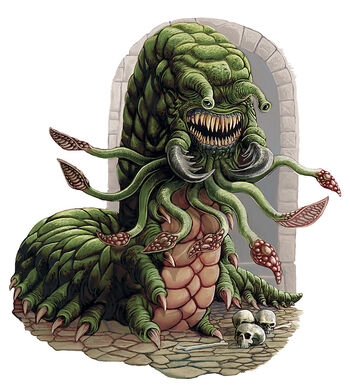 |
| 4E Carrion Crawler |
I really do to see how this particular monster has evolved over the different editions, though. 1E and 2E Carrion Crawler is more caterpillar-like, albeit far more segmented and with more legs, ending in a face full of tentacles. 3E and 4E have something straight out of Berserk, with more octopus-like tentacles and a far, far larger green body with a menacing mouth. 5E goes back for the maggot-y look, and as much as I do find the 3E/4E Carrion Crawler to objectively be cooler, I will admit that 5E Carrion Crawler does fit into the scavenging maggot theme a lot better. I do tend to like my fantasy monsters to a bit more fantastical, though, so I'm pretty sure that the default mental image of the Carrion Crawler is the 3E/4E one.



Centaur
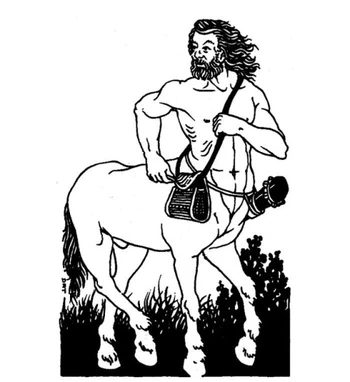 |
| 1E Centaur |
Of course, with so many other depictions of centaurs in popular culture, there's nothing stopping your GM from blindsiding you in having one of the Centaur tribes in the campaign be, well, basically a Dothraki-style raiding band (which is the direction that World of Warcraft took with their almost-always-chaotic centaurs), or to have a couple of solitary, nomadic centaurs who aren't exactly good but aren't straight-up evil (which issomething I read in a 2E module, I believe?), or just straight-up make a centaur player character. I'm not sure if 5E has official rules for centaur PC's, but they are kinda ripe to be one, yeah?


Chimera
| Chimeric Ankheg (3.5E) |
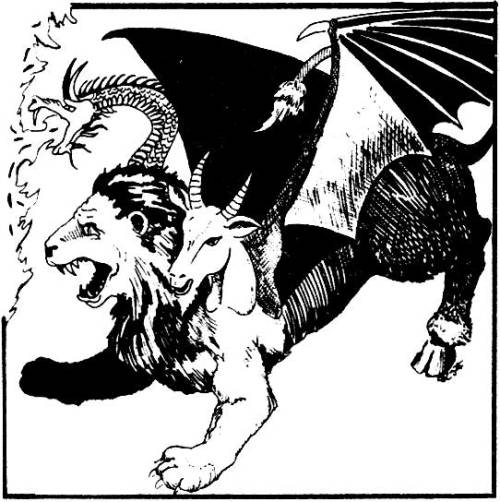 |
| 1E Chimera |



Chuul
First introduced in 3E, the Chuul are a pretty interesting race of monstrous lobster-people who ends up being tied to the Aboleth storyline. Remember those Aboleths? Ancient, timeless lamprey-monsters with mind-control powers? Like all eldritch abominations, they ended up heavily modifying a bunch of regular crustaceans and endowing them with sentience, creating the Chuul race. They're basically created back in the primeval ages where the Aboleths ruled the oceanic world, and the Chuuls were created to be their heralds to enforce their rule in the land outside of the ocean. With the Aboleth's empirse crushed under the coming of the gods, the Chuul race was mostly separated from their Aboleth masters... but they continue to do what the Aboleths created them to do -- collect humanoids, gather treasure and amass power.
They basically hang around the ruins of their old masters' civilization, waiting and using their ability to sense magic to hunt down and consolidate more and more magical artifacts and humanoid slaves and whatnot, waiting for the time that an Aboleth master would come and direct them to do something else. Design-wise... Chuuls are a pretty cool visual design, yeah? Not quite lobster or crawdad like, but similar enough that the crustacean origin is immediately evident. And then it's got a mouth full of tentacles, which in fantasy design is basically an instant shrug and nod that, yeah, some Cthulhu thing is going on here. I do like how they have a fun centaur-like gait thanks to how their limbs are arranged. Also do like their face and their tiny beady eyes. Overall, definitely a very welcome addition to the Abolteh backstory, and a pretty nifty monster in their own right!



Cloaker
 |
| 4E Cloaker |
I do really like how the horn-like protrusions on the manta ray ends up being adapted into some devil-like horns, and while it does have a very demonic angry face where a manta ray's head should be, those black dots on its spine are actually additional eyes that allow it to perceive silly walking adventurer snacks while it's cloaked. The Cloakers are also aberrations (which is probably why its biology is so weird) and mostly live in the Underdark, which is this network of subterranean caves that run through the entirety of the settings in D&D, and the Underdark's filled with a lot of crazy horrors. Like the Cloakers! Which, in addition to being dicks that hide in the walls and attack weakened prey, are also able to create phantasmal illusions as well as unleash these subsonic haunting moans that will cause everyone around it to feel sensations of doom and dread. It's gone a long way from being a silly 'gotcha' prank!


Cockatrice
A classic monster from English mythology, the Cockatrice tends to be a bit overlapping with the Basilisk in some other settings. D&D basically chose to really separate the two by really harping on the basilisk as a lizard, while the Cockatrice is... well, a lot more chicken-like than serpentine, even though the mythological cockatrice is technically a serpent with a chicken's head, not D&D's dragon-chicken creature. Like the Basilisk and the



Couatl
 And here we go with another Celestial monster in the Couatls. Taken from the Nahuatl word meaning 'serpent', D&D's Couatls are very loosely based on the Meso-American deity Quetzacoatl (not to be confused with the pterosaur of the same name), although mostly just in the theme of being a feathered serpent. And... and for the longest time, I thought Couatls were actually a monster that originated from some mythology, the way that cockatrices or cyclopses or chimeras do. But apparently other than the "feathered serpent" nod to the mythological Quetzacoatl, the Couatls are basically original to D&D. And they're lawful good angel-snake friends! They're essentially angelic messengers, and while not as powerful as real angels, they are definitely a good bunch of mystical beings that sort of just hang around and do good deeds, waiting for some prophecy or safeguarding the heirs of creatures that allied with them in the past. Couatls can shapeshift and will basically just stick around as hidden messengers and guardians until they are really needed. They're not exactly immortal, but are very, very long-lived, and they'll produce offspring only if they sense their impending demise and realize that their task on the mortal plane isn't done yet.
And here we go with another Celestial monster in the Couatls. Taken from the Nahuatl word meaning 'serpent', D&D's Couatls are very loosely based on the Meso-American deity Quetzacoatl (not to be confused with the pterosaur of the same name), although mostly just in the theme of being a feathered serpent. And... and for the longest time, I thought Couatls were actually a monster that originated from some mythology, the way that cockatrices or cyclopses or chimeras do. But apparently other than the "feathered serpent" nod to the mythological Quetzacoatl, the Couatls are basically original to D&D. And they're lawful good angel-snake friends! They're essentially angelic messengers, and while not as powerful as real angels, they are definitely a good bunch of mystical beings that sort of just hang around and do good deeds, waiting for some prophecy or safeguarding the heirs of creatures that allied with them in the past. Couatls can shapeshift and will basically just stick around as hidden messengers and guardians until they are really needed. They're not exactly immortal, but are very, very long-lived, and they'll produce offspring only if they sense their impending demise and realize that their task on the mortal plane isn't done yet.5E Couatls have a trait that they cannot lie, but can withhold information, be vague, or allow others to jump into wrong conclusions as long as it's done in the name of protecting something sacred. I do find this little trait to be fun, and it's definitely a neat little RP-ing moment. While reduced to a slightly more mundane messenger in 5E, I remember 3E and 4E Couatls as far, far more angelic, godlike messengers. Again, while the D&D sourcebooks give a guideline for a specific iteration of the world, it encourages you to basically take whichever version you like in world-building. Regardless, these are pretty cool!


Crawling Claw
First showing up in 2E and reminding everyone of the Thing from Addams Family is the Crawling Hand, which is a little teeny tiny reanimated hand. The backstory here is that these hands are specifically made from the hands of a murderer (and, importantly, one that hasn't been otherwise turned into another undead creature or has passed on), but the thing is that these little reanimated parts of a body can be hilarious and spooky depending on the situation. Sometimes both at the same time, y'know? There's just something about a disembodied hand (or head, or eyeball) that's just both whimsical but also pretty grisly at the same time. The Crawling Claw is unique in that thanks to the fact that it's made by a ritual, it can't be turned or controlled by other spells, basically just bound as an extension of their creators. They're basically like little dumb servants that can receive orders, but can only do very, very simple ones. Which is fair, since this is a literally brainless creature. It otherwise has the killing intent and general nastiness of the murderer that it was when it was alive, and can go around on a killing spree... which, again, while kinda spooky, is also hilarious to imagine this little hand just scuttling around like a bizarre spider, choking and stabbing everything it passes.
5E's Monster Manual describes a little variant called a Living Claw, made out of the severed hand of a still-living murderer and can basically be reattached to the hand of the murderer as if it's never popped off. And while this might sound like an awesome feature for the murderer, when the Living Claw separates from the body, the living body falls into a coma, while killing the Claw also kills the murderer, which means that you kinda need to get a bit creative to really try and make the Living Claw feel like an advantage.




Cyclops
And here we go, yet another creature taken wholesale from Greco-Roman mythology. And I must confess that I tended to find the 'giant' enemies in D&D to be a bit... samey? Particularly the ones that are just huge human dudes, like ogres and hill giants. Cyclopes have... one eye, which makes them a bit different? Cyclopes are basically a bunch of giants that sort of live as solitary wanderers in wild-lands, not having any real religion or culture, and just sort of hang around alone or in small family groups. And it also has herd animals. They're so dumb that the Monster Manual notes that your warlock, cleric or caster could fool the Cyclops into worshipping them with a display of magic. Okay! I think they were considered fey creatures in 4E. Ultimately, kinda boring, but sometimes all you need is a big giant brute in a campaign.


Darkmantle
One of my favourite monsters from 3.5E, and one that's shown up in both 4E and 5E. I love these things! Just by looking at the picture, you kind of think that the Darkmantle's just a vampire squid, a squid with a bunch of cape-like protrusions between its tentacles. Sure, its eyes are kinda weird since it has a bunch of it running around its body, but it's just a weird squid, y'know? And then you kinda read a bit more into its backstory, and find out that Darkmantles are ambush predators in caves. They're basically living in the same Underdark caverns and occupy a similar niche to the Cloakers, where the Darkmantles cling to ceilings and remains still and pretends to be a stalactite... something that's not too hard to imagine when you both look at the shape of this thing, and when you realize that real-life octopi and squids have the ability to change their colour and even consistency of their flesh. And then the Darkmantle will drop down, unfurling itself... and it can unleash a Darkness Aura that engulfs the area with magical darkess while it swoops down and wraps itself around some foolish adventurer's head, Facehugger style. Which is, again, a pretty awesome adaptation of a squid's ink-ejecting ability, albeit used offensively to hunt.
I do really like that the caverns of the Underdark, in addition to being filled with all sorts of hideous monsters and abominations, also has this bizarre ecology where the Darkmantles basically fill in the ecological role of small ambush predators, sort of like the hyenas to the Cloakers' lion, y'know?



Death Knight
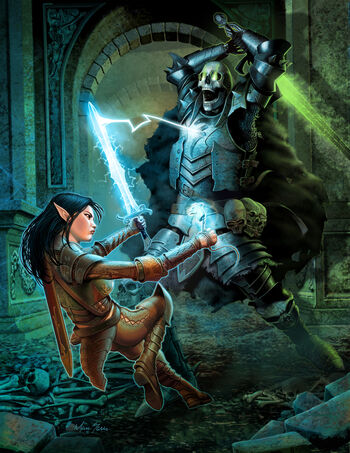 |
| Death Knight (4E) |
Interestingly, what makes a Death Knight particularly unique is that it can still cast divine paladin spells (other than healing), even though normally that would be anathema to undead creatures. Death Knights are basically immortal, continually rising from its destruction, until it truly atones or finds redemption... and if you're horrible enough that you've turned into a Death Knight upon death, I don't see that happening for most Death Knights out there. One of the most memorable villains in the 2E books is Lord Soth, who's got a long backstory.



Demilich
D&D has sort of gone back and forth on whether a Demilich is merely a lesser version of the Lich or a superior version, but nowadays sort of settle more towards the latter. We're not going to cover the Lich for a while, but suffice to say that Demiliches are a state that Liches obtain if they have risen above the need of actually even having an undead body, for they will soon unlock the secrets of magic and how the world work... or, in 5E's version, a Lich who's so absent-minded and lived for so long that they forgot to feed their phylactery and eventually regress into a different form. Again, the different editions go back and forth on whether the Demilich is a lesser form of the regular Lich, or a greater one. While on the surface the 5E Demilich is just a skull with gemstones for eyes that rises up from the phylactery and scream very loudly --which doesn't sound too impressive, but the Demilich's howl will straight-up murder anything that is too weak to withstand it. In addition to a bunch of powerful spells and the ability to unleash curses, drain energy and a whole lot of spooky undead abilities. If left alone, the Demilich will retreat back to its phylactery, but if it feeds on even a single soul, it will return to its mighty lich body.
 And the reason why the Demilich is so differently portrayed is due to how the creative team feels about the Tomb of Horrors, one of the most iconic dungeons from the first edition meant to be a 'meat grinder' to kill as many adventurers as possible, by being what's essentially Dark Souls, but even more dickish. And the main big bad in the Tomb of Horrors is a Demilich called Acererak -- who embraced the form of the Demilich, treating it as a natural evolution of undeath, accepting that he would eventually become a disembodied consciousness that will travel the planes, while turning the massive Tomb of Horrors into a massive phylactery with which it's going to absorb a vast amount of foolish adventurer souls to fuel his eventual ascension. This sort of greater Demilich, or a "Demilich of Acererak's Path", is far more conscious than the reactionary, withered regular Demilich, and basically exists in tandem with a lair that also functions as a huge soul-trapping machine, allowing said Demilich to retain its sentience.
And the reason why the Demilich is so differently portrayed is due to how the creative team feels about the Tomb of Horrors, one of the most iconic dungeons from the first edition meant to be a 'meat grinder' to kill as many adventurers as possible, by being what's essentially Dark Souls, but even more dickish. And the main big bad in the Tomb of Horrors is a Demilich called Acererak -- who embraced the form of the Demilich, treating it as a natural evolution of undeath, accepting that he would eventually become a disembodied consciousness that will travel the planes, while turning the massive Tomb of Horrors into a massive phylactery with which it's going to absorb a vast amount of foolish adventurer souls to fuel his eventual ascension. This sort of greater Demilich, or a "Demilich of Acererak's Path", is far more conscious than the reactionary, withered regular Demilich, and basically exists in tandem with a lair that also functions as a huge soul-trapping machine, allowing said Demilich to retain its sentience. And while we stop off at one of the more unlikely iconic monsters in D&D, click below the break as I go through the Player's Handbook for 5th Edition, and discuss the 'default' player character race choices!
"Player Character" Races
Character creation in D&D is a nerve-wracking process. And as anyone who's ever created a customizable character in Elder Scrolls, World of Warcraft or any game where you get to pick from a selection of race-gender-and-class combination, it's particularly nerve-wracking... particularly since you're going to be actually acting out scenes and role-playing as these characters. Do you go for a stable, relatable human character? How about a snotty elf wizard, an angry orc barbarian, a dwarven paladin, or an angsty Tiefling or Drow who are rejected from their own people? Do you just take a character you like from fantasy fiction, and basically make up Illidan Stormrage or Gandalf the Grey in D&D form? Or do you go super-adventurous and play a monster as your PC? A goblin, a kobold, a tabaxi, a bullywug, a lizardman, a goliath, a kenku, a centaur... the sky's the limit, y'know? And that's before throwing in classes, which I will not be covering.
And while every single D&D edition would publish supplemental books on how to make PC's out of other races, all editions have what is termed as "Core Races", which are the ones that are detailed in the core rulebook. And basically, this amounts to human, elf, half-elf, dwarf and hobbit halfling being core races in every single edition, with gnomes and half-orcs weaving in and out on whether they're considered a core race or not. And... and they're kinda boring, but I kinda get it. Personally, while I've always preferred picking one of the more exotic monster races, I do understand the need of having a basic feel of general fantasy about things. I was certainly happy when 4th edition added Tiefling (half-devils) and Dragonborn (half-dragons) as core races. And other than my first couple of campaigns, I ended up diving head-first into playing with dragonborns, tieflings, tritons, kenkus, lizardmen and other wackier races.
But ultimately... make or play a character that makes you comfortable, y'know? That's what D&D is all about. I love weird monster races, and I love trying to think about how an adventurer that also happens to be a Bullywug or a Thri-kreen would behave. Still, the core races do help make a very solid little backbone for a Tolkien-esque setting, and it's always neat for any starting D&D party to go through a relatively 'expected' settings before venturing out to a hub area that's a Thri-kreen hive or a Lizardfolk swamp or Tlincalli desert village.
I could go through some of the other player races in 5E introduced in other supplementary material, like the genasi, aasimar, goliath, firbolg or whatever... but I feel like that could take up an entire article on their own.
I could go through some of the other player races in 5E introduced in other supplementary material, like the genasi, aasimar, goliath, firbolg or whatever... but I feel like that could take up an entire article on their own.



Human
The most basic, default race, because, hey, unless there's some bizarre freak of scientific breakthrough in the future, if you're reading this page, you're absolutely likely to be a human. And thus... humans are... humans, y'know? They're like bread. They're the default choice, and they're sort of just there, jack-of-all-trades, trying to sort of copy a fantasy version of real-life medieval culture. The whole point of humans in D&D races is that they're so short-lived that it's human spirit and determination that makes them extra badass or whatever, basically being the pioneers of conquest,m innovation and trade because they're go-getters, and they like to make friends and everything, y'know?
The 5E Player handbook basically divide humans into several different sub-cultures based on the setting, but, y'know, it's not that interesting. We've got the Calishite, Chondathan, Damaran, Illuskan, Mulan, Rashemi, Shou, Tethyrian and Turami, but man, unless we're getting into the specific history and politics of the different nations, they're just all kinda humans, y'know? They're humans. You're a human. I'm a human. It's all right to want to be a human, although I personally see so many other interesting things I could role-play as in this fantasy world, that I probably won't ever play a human player character simply because there's so many other more interesting things out there. But hey, you do you!



Dwarf
 Let's get the Tolkien races out of the way first. And I don't hate on the Tolkien quartet of human/dwarf/elf/hobbit, but it's just that... they're essentially all humans. One's just a bit shorter and drunker, one's even more shorter, and one's tall and immortal. And they kind of show up in nearly all fantasy games and settings. Which is nice and good, but dwarves are always likable while also tending to remain static. After all, our dwarves are all the same, to quote TV-Tropes. They're short, stout, live in mountains, have a huge mining culture, have a huge familial culture, have ancient kingdoms, drink a lot, and live longer than humans. I did at least enjoy the very ancestral and tradition-mired flavour of dwarven culture, and playing a dwarf gives you a lot of excuse to lob around more cuss words than a sailor. Dwarves in 5E are divided into two subraces, the Hill Dwarf , which have keener senses, deeper intuition and stronger resilience, and the Mountain Dwarf, who are hardier and a bit stronger. Plus the Duergar, which we'll cover later because they also count as a monster of their own!
Let's get the Tolkien races out of the way first. And I don't hate on the Tolkien quartet of human/dwarf/elf/hobbit, but it's just that... they're essentially all humans. One's just a bit shorter and drunker, one's even more shorter, and one's tall and immortal. And they kind of show up in nearly all fantasy games and settings. Which is nice and good, but dwarves are always likable while also tending to remain static. After all, our dwarves are all the same, to quote TV-Tropes. They're short, stout, live in mountains, have a huge mining culture, have a huge familial culture, have ancient kingdoms, drink a lot, and live longer than humans. I did at least enjoy the very ancestral and tradition-mired flavour of dwarven culture, and playing a dwarf gives you a lot of excuse to lob around more cuss words than a sailor. Dwarves in 5E are divided into two subraces, the Hill Dwarf , which have keener senses, deeper intuition and stronger resilience, and the Mountain Dwarf, who are hardier and a bit stronger. Plus the Duergar, which we'll cover later because they also count as a monster of their own!


Elf
 Unlike dwarves, our elves are different. Be it Elder Scrolls, World of Warcraft, the Witcher, Baldur's Gate or any given fantasy setting with elves, there will be a lot of variety between an elf from setting to setting, with the only thing that tends to be common is that the elves have pointy ears, live for a very long time (or are straight-up immortal) and tend to be dismissive or outright xenophobic of humans. And that's without getting into the fact that most settings have different sub-types of elves! Warcraft has high elves, blood elves, night elves, void elves and nightborne. Elder Scrolls has high elves, dark elves, wood elves and the orcs. So on and so forth, and throughout D&D's many different editions and settings, the different editions don't exactly agree on what constitutes an 'elf' or an 'eladrin' or anything in-between. Still, in most player handbooks, the elves tended to follow the simple Tolkien formula. They're immortal, living in the world but not exactly part of it thanks to their pseudo-immortality. They live in massive palaces or sometimes in ancient forests. They're good-aligned, if not the nicest people around, and they love art and poetry, and are attractive. 5E divides the elves into three main subraces: High Elves, Wood Elves and Dark Elves. Or the Drow -- we'll cover the Drow, like the Duergar, seperately because they have an entry in the Monster Manual.
Unlike dwarves, our elves are different. Be it Elder Scrolls, World of Warcraft, the Witcher, Baldur's Gate or any given fantasy setting with elves, there will be a lot of variety between an elf from setting to setting, with the only thing that tends to be common is that the elves have pointy ears, live for a very long time (or are straight-up immortal) and tend to be dismissive or outright xenophobic of humans. And that's without getting into the fact that most settings have different sub-types of elves! Warcraft has high elves, blood elves, night elves, void elves and nightborne. Elder Scrolls has high elves, dark elves, wood elves and the orcs. So on and so forth, and throughout D&D's many different editions and settings, the different editions don't exactly agree on what constitutes an 'elf' or an 'eladrin' or anything in-between. Still, in most player handbooks, the elves tended to follow the simple Tolkien formula. They're immortal, living in the world but not exactly part of it thanks to their pseudo-immortality. They live in massive palaces or sometimes in ancient forests. They're good-aligned, if not the nicest people around, and they love art and poetry, and are attractive. 5E divides the elves into three main subraces: High Elves, Wood Elves and Dark Elves. Or the Drow -- we'll cover the Drow, like the Duergar, seperately because they have an entry in the Monster Manual.High Elves are basically Tolkien elves. Keen of mind, master of at the very least the basics of magic, and they can fall into one of two categories: the haughty, reclusive dicks that believe themselves superior to everyone else, and a more common one that appreciates humans and other non-elven races. Depending on the setting, these high-elves can have skin that are like humans, or glow like the sun. Wood Elves, meanwhile, are basically the nature-loving elves, what the Night Elves of Warcraft and the Bosmer of Elder Scrolls are based upon. Also known as wild elves, green elves or forest elves depending on the setting, they live in the jungle, have more coppery or green skin, and are survivalists in the jungle. And that's what we're covering, since we're saving the Drow for later. Believe me, between the moon elves, the Eladrin, the aquatic elves, the wild elves and like a couple half-dozen more variants, there are a lot of elves in D&D.



Halfling
The trademark-friendly version of "Hobbit", I honestly have to keep reminding myself that halflings and gnomes are two separate races. They're both tiny, happy little humans! Halflings are basically little people who get by living happy, practical lives, trying to live from day to day as simply as they can, so long as they're happy. Family, friends, and maybe the odd dream of gold and glory! They're basically Hobbits, and I don't mean that in a demeaning way. With all of the asshole races in the world of D&D, it's neat to have a race or two whose whole point is that they're happy god damn it and they're nice and good and wholesome. Of course, not all Halflings are like, happy Frodo Baggins people who live in their shires and keep happy farmlands and whatnot, and you're free to play your Halfling as an angsty emo murder machine, just as you're free to play a Drow bard with stage-fright. Again, D&D allows you to literally make any character you want. Just don't try to annoy your DM too much. 5E gives two subraces of Halflings, the Lightfoot and the Stout, which are more like clans and societies more than subraces. Lightfoots are basically halflings that can easily hide from notice. Stouts are hardier and are more resistant to poison. I've always found halfling to be probably the most boring race out there, but it's worse because...



Gnome
...gnomes exist. Again, I keep forgetting Gnomes are a separate race form Halflings in D&D. I guess the very distinct identity that the World of Warcraft gnomes have, being a race of child-like, crazy tinkerers with a whole load of steampunk machinery and fancy pink hair is so, so much more distinctive than D&D's Gnomes, which are basically... kind of the same like halflings, but a bit more badass, but are also long-lived. Depending on the edition, they have some Fey-ness to them, and at least in 5E, some of the Warcraft-style tinkering have bled over to D&D Gnomes. Which is neat. The gnomes as a race are basically a lot more panicky and excitable than halflings. I honestly have the gnomes and halflings blur together in my head as "the short races that aren't dwarves", and always felt that they're pretty redundant. I think I like the gnomes a bit better, because while it's not always shown to the forefront as PC's, gnomes have a fair bit more nods to the fair folk, being able to manipulate illusions to hide their forest homes. And they have super-long names, too, apparently. Gnomes in 5E are divided into Forest Gnomes, which are all about illusions and stealth and pretty secretive folk, basically adapting a whole fairy-like quality to them, being also able to speak with animals. Meanwhile, Rock Gnomes are basically WoW gnomes that are able to tinker with machinery and artifices.



Half-Elf
Half-elves are a race that's half-human and half-elven, combining the curiosity, inventiveness and ambition of humans with the refined tastes and love of nature of the elves. And while they don't live quite as long as their elven parents, they definitely live a lot longer than their human kin... which means that whichever side of the family they live with, it's going to be awkward. Either seeing their human buddies wither and die while they remain young, or grow way too quickly among the elves and watch as their peers remain children. It's a pretty interesting backstory, although in practice I've always sort of found that most half-elf characters tended to play off as being a bit too similar to essentially yet another Spock clone. That's not to say that the race is boring, and they certainly could be fun (my first D&D character in a proper long campaign was a half-elf, actually!) I always felt like they lacked the pizzazz of the culture clash that would be brought forth by having, say, a half-orc character.



Half-Orc
Because, shit, the stark difference from the more constructive human society and the destructive orcs is a lot more fun to roleplay compared to "man, all my relatives age differently than I do, it sucks". And sure, a half-elven story of angst would probably make a nice novel, but it's not actually fun to role-play on a tabletop game, y'know? Whereas being a half-orc leads to a lot more fun encounters. The humans see the half-orc as barbaric brutes, while the orcs will probably view the half-orc as weak half-breeds. And while originally intended to be a way for the players to actually play as orcs while sidestepping the fact that all orcs are super-evil in D&D, I do like the narrative of having to try and find your own place, whether it's as a nomad, or part of a human society, or part of an orc clan. Because while half-orcs aren't as smart as humans or as strong as full-blooded orcs, they're smarter than the average orc and stronger than the average human.
Originally, half-orcs have the... unfortunate origin story of basically being born when orc tribes invaded human tribes, which kinda implies rape, but newer editions basically quashed this quickly by making sure that, hey, there have been history of orc and human tribes making alliances that are sealed by marriages and whatnot. Like the half-elves, the half-orcs don't really have much of a culture to call their own, most of the time either serving as nomads or just shuffling into the cultures of one of their parents. In 5E the half-orcs sometimes experience the mark of Gruumsh, where the orcs' barbaric god of combat will sometimes whisper to half-orcs and basically try and lull them into doing some angry, ragey stuff and this basically makes most orcs a lot more emotionally volatile than the other humanoid races.


Dragonborn
 And here we go with the races introduced as core races in 4E, which... is relatively new, but has been around for long enough that I basically think of them a lot more readily than the gnomes or the half-elves. And, well, the Dragonborn is basically a race of humanoids who has some dragon ancestry in the past. Depending on the sourcebook, they're either the result of a dragon/human pairing, or an entirely separate cousin race created from the blood of a dragon good. Also... no, there is relation to the Dovahkiin; Skyrim was released a couple of years after the 4E core books. The Dragonborn are basically humanoid dragon-men, with the heads and scales of dragons, and generally being rare enough in most settings that most people outside of cosmopolitan cities regard them with confusion. These dragon-men hatch from eggs and are basically their own unique race, and most of the 'standard' classic Dragonborn lack wings and tails... although in 4E, some enemy variants do have them. Overall, pretty cool stuff -- everyone likes dragons, right? So I can definitely see why the team ended up making this dragon-man race as a core race as opposed to using something like the less-impressive Kobold or Lizardfolk race.
And here we go with the races introduced as core races in 4E, which... is relatively new, but has been around for long enough that I basically think of them a lot more readily than the gnomes or the half-elves. And, well, the Dragonborn is basically a race of humanoids who has some dragon ancestry in the past. Depending on the sourcebook, they're either the result of a dragon/human pairing, or an entirely separate cousin race created from the blood of a dragon good. Also... no, there is relation to the Dovahkiin; Skyrim was released a couple of years after the 4E core books. The Dragonborn are basically humanoid dragon-men, with the heads and scales of dragons, and generally being rare enough in most settings that most people outside of cosmopolitan cities regard them with confusion. These dragon-men hatch from eggs and are basically their own unique race, and most of the 'standard' classic Dragonborn lack wings and tails... although in 4E, some enemy variants do have them. Overall, pretty cool stuff -- everyone likes dragons, right? So I can definitely see why the team ended up making this dragon-man race as a core race as opposed to using something like the less-impressive Kobold or Lizardfolk race.And we haven't actually met actual dragons yet in our coverage of D&D monsters, but as a quick primer, there's ten main kinds of dragon -- five chromatic ones, and five metallic ones -- and your Dragonborn character's going to have a specific scale that will then grant it a special breath weapon, even if generations of Dragonborn intermingling have caused a slightly more uniform appearance for the race. They basically can unleash a breath weapon depending on their heritage. Fus ro dah away! Dragonborns live in clans and basically have a similar outlook on their clan and life as dwarves -- the clan comes first, and never bring dishonour to the clan, and they commit very hard to their role within the clan. The 5E player's handbook notes that Dragonborn aren't as common in the world of D&D, and basically will tend to be treated with suspicion. "Oh no, a giant kobold! Oh no, a servitor of a dragon!" Overall, though, as perhaps one of the few basic core races to actually look monstrous in some way, I am a huge fan of the Dragonborn. And that's before we get to the obligatory Skyrim jokes, which, believe me, will inevitably happen in your sessions if you play a Dragonborn character.



Tiefling
 And if you want to take being an evil outcast even further, you can become a Tiefling, who's straight-up half demon! Or, well, half devil or half daemon or what-have-you. Tieflings (appearance wise they're kinda similar to WoW's Draenei) were introduced as an enemy monster in 2E, then one of the potential "planetouched" races in 3E with its counterparts being the Aasimar (half-celestial) and the various Genasi (half-elemental). Being half-devils and people loving their sexy half-devils, the Tieflings, perhaps a bit obviously, rose to such popularity that they became a core race in 4E. And apparently there's a whole slew of love-hate relationship with them? I was surprised to learn that this is a thing, because I've always found Tieflings as being pretty cool, particularly as a differently-flavoured version of Drow. 5E's Tieflings note that they're not always the direct offspring of a demon and a mortal, but simply because they have the bloodline somewhere in their ancestry. It's because of a pact struck generations ago between their ancestors and the devil prince Asmodeus (or whatever evil deity you want in your setting), meaning that an ancient sin has cursed their entire bloodline. Sucks to be them, now stuck with being bullied and ostracized for being born as who they are! Of course, depending on the specific character, maybe the Tiefling in question actually deserves the reputation -- years of mistrust and oppression tend to cause a lot of Tieflings to end up believing all the talk about "demon blood" and cause them to become evil anyway, even though, unlike Cambions, Tieflings aren't actually predisposed to evil.
And if you want to take being an evil outcast even further, you can become a Tiefling, who's straight-up half demon! Or, well, half devil or half daemon or what-have-you. Tieflings (appearance wise they're kinda similar to WoW's Draenei) were introduced as an enemy monster in 2E, then one of the potential "planetouched" races in 3E with its counterparts being the Aasimar (half-celestial) and the various Genasi (half-elemental). Being half-devils and people loving their sexy half-devils, the Tieflings, perhaps a bit obviously, rose to such popularity that they became a core race in 4E. And apparently there's a whole slew of love-hate relationship with them? I was surprised to learn that this is a thing, because I've always found Tieflings as being pretty cool, particularly as a differently-flavoured version of Drow. 5E's Tieflings note that they're not always the direct offspring of a demon and a mortal, but simply because they have the bloodline somewhere in their ancestry. It's because of a pact struck generations ago between their ancestors and the devil prince Asmodeus (or whatever evil deity you want in your setting), meaning that an ancient sin has cursed their entire bloodline. Sucks to be them, now stuck with being bullied and ostracized for being born as who they are! Of course, depending on the specific character, maybe the Tiefling in question actually deserves the reputation -- years of mistrust and oppression tend to cause a lot of Tieflings to end up believing all the talk about "demon blood" and cause them to become evil anyway, even though, unlike Cambions, Tieflings aren't actually predisposed to evil.And while the degree of demonic features are different, all Tieflings will have massive devil horns (which are variable, depending on what your preferred demon look is), sharp fanged teeth, glowing eyes and demonic tails, plus a couple of demon-themed racial abilities. In earlier versions, some may have more pronounced demonic features like cloven feet, and depending on their demonic sire, might have additional properties like massive antler horns or not casting reflections in mirrors. Basically, it's a way to play an edgy, oppressed character without having to resort to the Drow all the time, which is neat! Also, apparently, Tieflings tend to use human names until they seek to differentiate themselves from their parents, after which they take a completely different fiendish name that sound menacing. Or metal, I suppose. To really hammer home that Tieflings are kinda the embodiment of the emo teen in all of us, some Tieflings adopt a 'virtue' name that is basically a concept. Like "Creed" or "Glory" or "Despair" or "Hope" or "Sorrow" (actual potential names form the Player's Handbook), and these either represent a quest that the Tiefling strives to be the embodiment of... or just an emo name that reminds them of their destiny.
By the way, there's a lot of demons, devils and yugoloths for you to draw from, so depending on the specific type of fiend your Tiefling characte draws from, you might even have your specific Tiefling get powers, GM willing.
A quick list of the creatures that are covered in the 5E Monster Manual here:
- Carrion Crawler: Large monstrosity; unaligned; CR 2
- Centaur: Large monstrosity; neutral good; CR 2
- Chimera: Large monstrosity; chaotic evil; CR 6
- Chuul: Large aberration; chaotic evil; CR 4
- Cloaker: Large aberration; chaotic neutral; CR 8
- Cockatrice: Small monstrosity; unaligned; CR 1/2
- Couatl: Medium celestial; lawful good; CR 4
- Crawling Claw: Tiny undead; neutral evil; CR 0
- Cyclops: Huge giant; chaotic neutral; CR 6
- Darkmantle: Small monstrosity; unaligned; CR 1/2
- Death Knight: Medium undead; chaotic evil; CR 17
- Demilich: Tiny undead; neutral evil; CR 18
That's the article Reviewing D&D Monsters - 5E Monster Manual, Carrion Crawlers to Demiliches (ft. Player Races)
That's it for the article Reviewing D&D Monsters - 5E Monster Manual, Carrion Crawlers to Demiliches (ft. Player Races) this time, hopefully can be useful for all of you. okay, see you in another article post.
You are now reading the article Reviewing D&D Monsters - 5E Monster Manual, Carrion Crawlers to Demiliches (ft. Player Races) with link address https://kanakoroku.blogspot.com/2019/09/reviewing-d-monsters-5e-monster-manual_23.html

